
the southernmost point
(and back)
At 5:30 the alarm clock rings. Our tent is next to the little bus station in Cerro Castillo (130 inhabitants). We have only 50 kilometers on the schedule, 207 elevation gain. We get up this early especially in hopes of riding these kilometers before the wind picks up. After all, we have to head northwest, exactly against the direction of the wind. After stopping at the village’s disproportionately large hotel for water, toilet visits and wifi, we roll out of the village. Our destination is Laguna Amarga, a lake just before the entrance for Chile’s most popular National Park and tourist attraction: Torres del Paine! At the lake we find, as hoped, a canopy from which you can admire the lake and sit out of the now hard and cold wind. Between two busloads of tourists we change clothes and entrench ourselves behind the windbreak with a book. Still pretty chilly to spend such a long afternoon sitting outside. Many a tourist comes to chat with us and congratulate us on our adventure. Some Flemings talk about us in our mother tongue and in silence we let ourselves be caressed by their admiration. To our surprise and amusement, a few of them also consider us a suitable target to express their frustration with their group trip. I knot in my ears the whispered advice of a Canadian: ‘NEVER travel with a group of WOMEN!!! It’s terrible!’
At the end of the afternoon we pitch our tent under the canopy, which just (not) fits. We also set the alarm clock for the next morning. We want to cycle through the park in one day and preferably as long as possible without having to fight the wind.
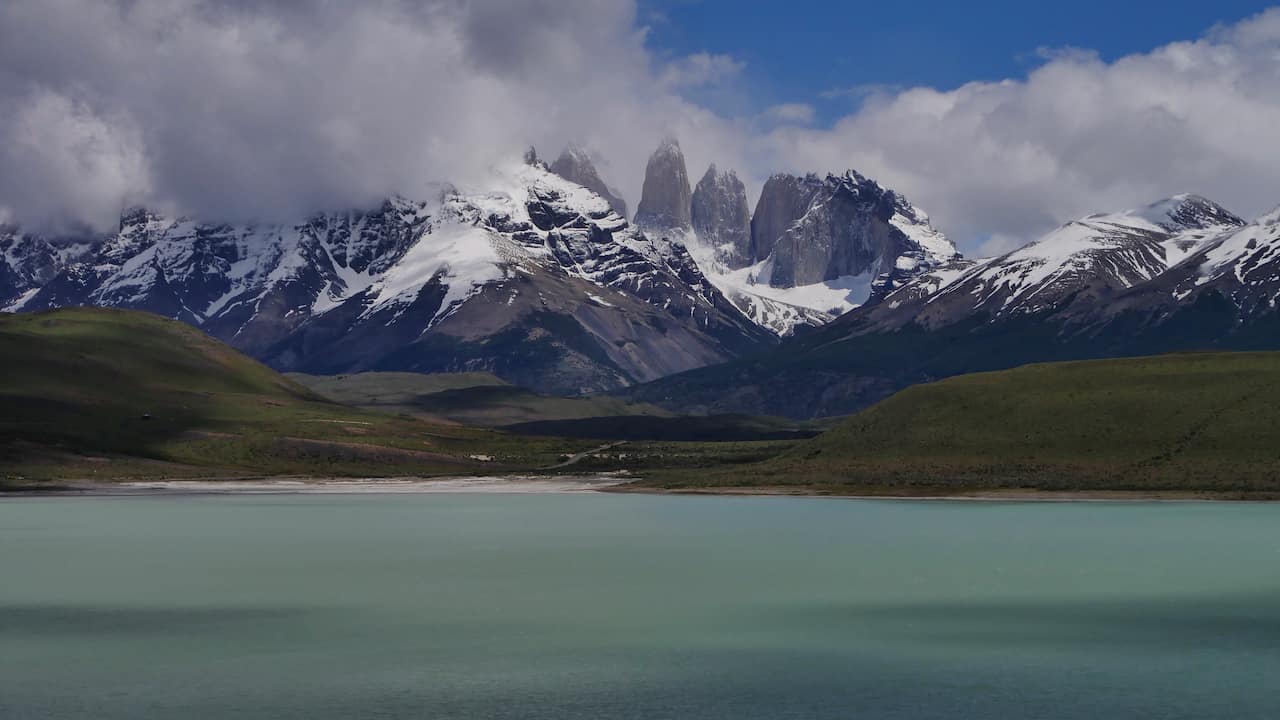
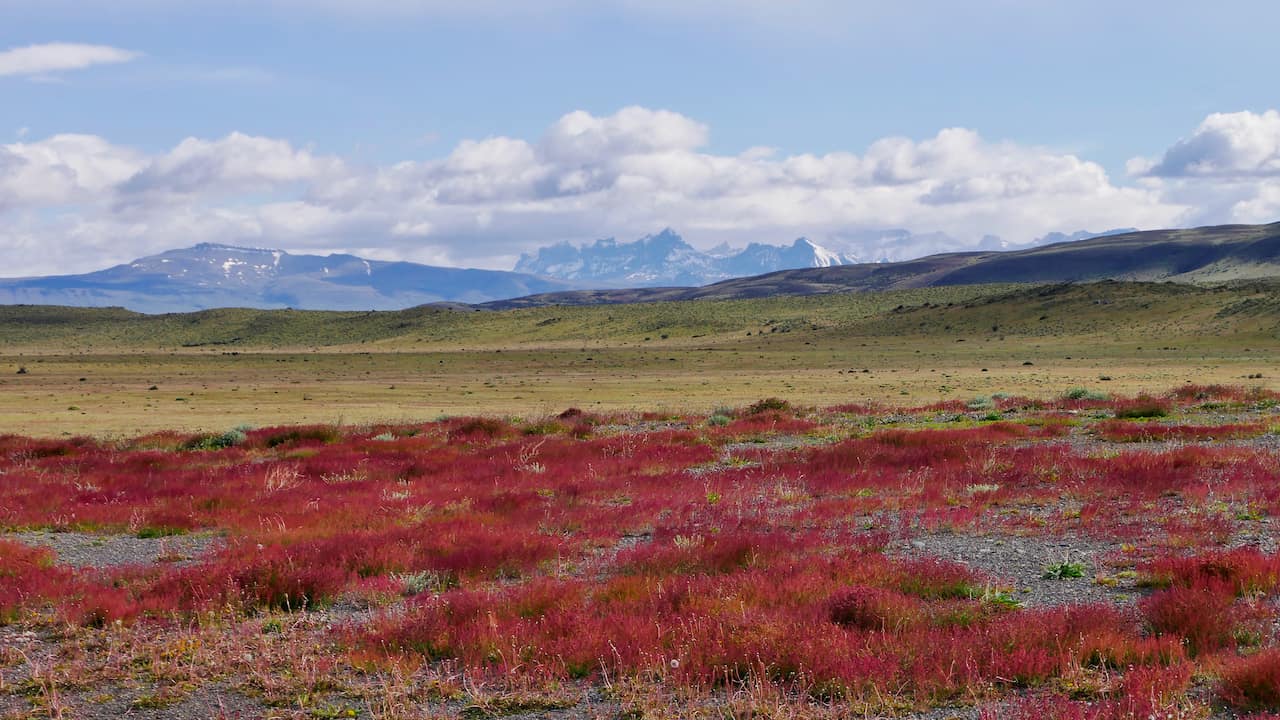
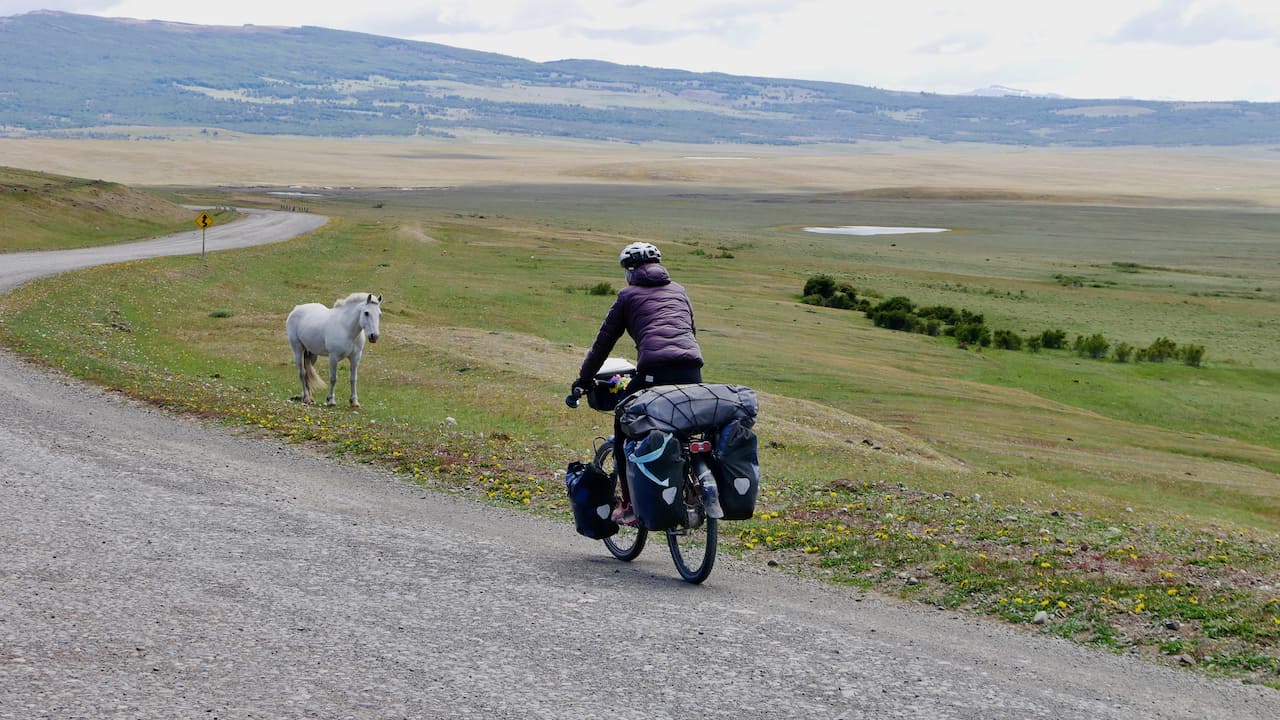
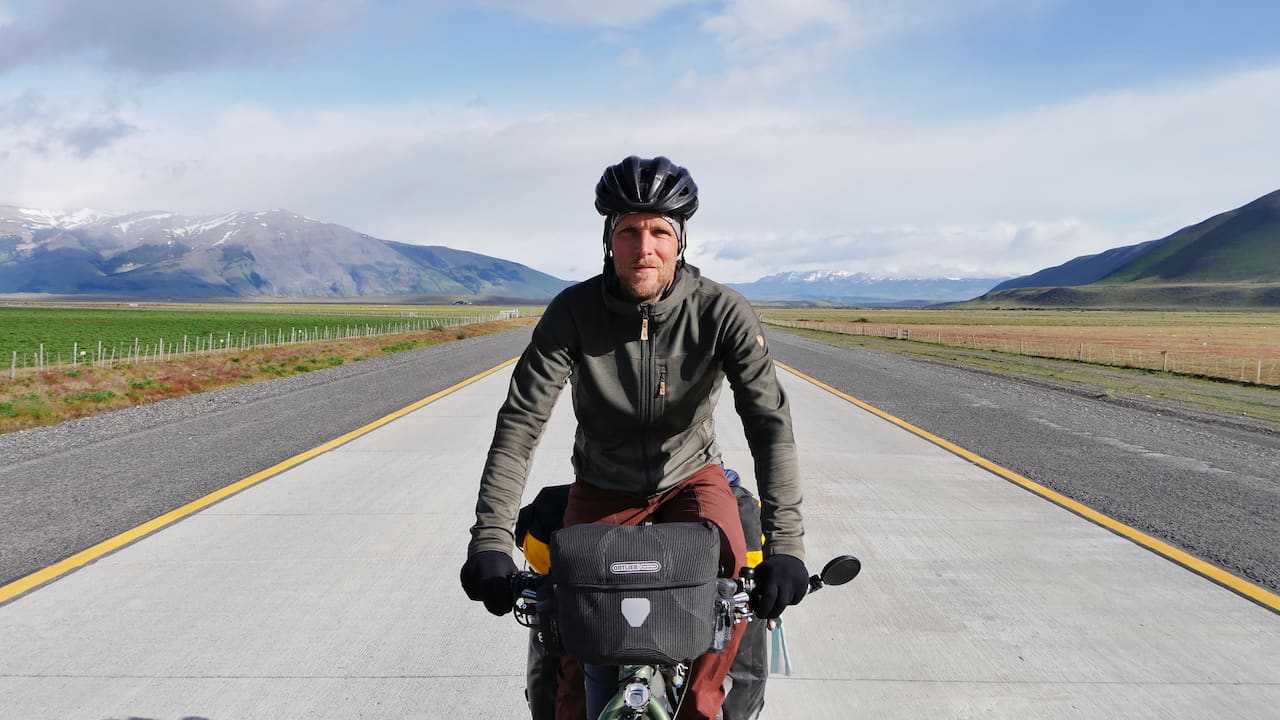
At 6:50 we drive toward the entrance to the park. The entrance fee is substantial: € 28. And that while we only want to cycle on the 40km through road that leads through the park. Most visitors come here for several days for hiking, trekking and camping. From one cyclist we understood that it is free if you only want to cross through, another told us that you can cycle in early in the morning without any problem.
However, as we cycled toward the entrance, we were immediately stopped and directed to the counter. We sincerely doubted whether we were up for it…. €28 for 40km of cycling…. and that while it is cloudy and it is questionable whether we will be able to see anything of the impressive mountains. We weigh our options and then the desk clerk approaches us: “You only want to cycle through the park, right? I understand. I do want to sell you tickets for the local price: 16,000 pesos together.’ Or €8 per person. What a friendly guest!!! We thank him warmly and a little later we cycle up a steep slope into the park.
Right at the first turn we are welcomed by a herd of guanacos. There are little ones among them and I manage to photograph them drinking with their mothers. Today our early departure does not give us the lead we hoped for. We cycle through the park in the howling wind. We are even, 10 meters apart, blown synchronously off our bikes. Paul manages to land on his feet, I land under my bike in the gravel. Fortunately, the wind also blows the clouds apart and we get several moments of beautiful views of the famous “torres” (towers) after which the park is named.

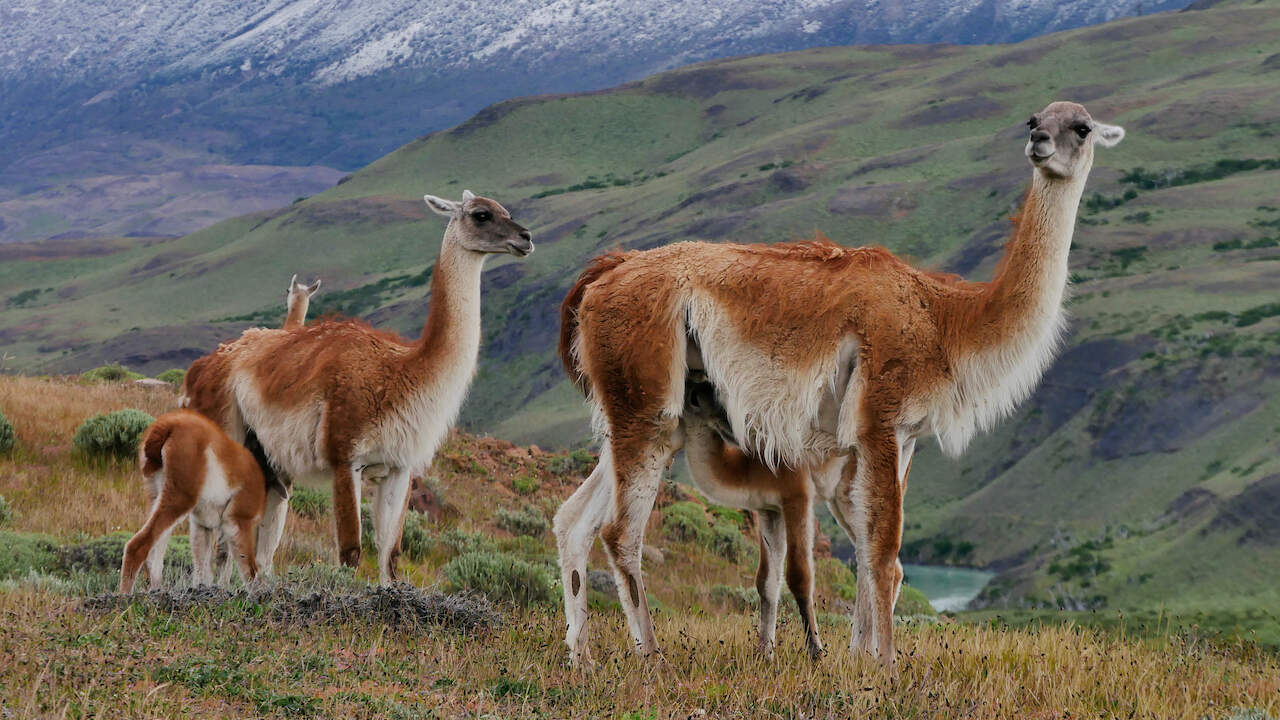
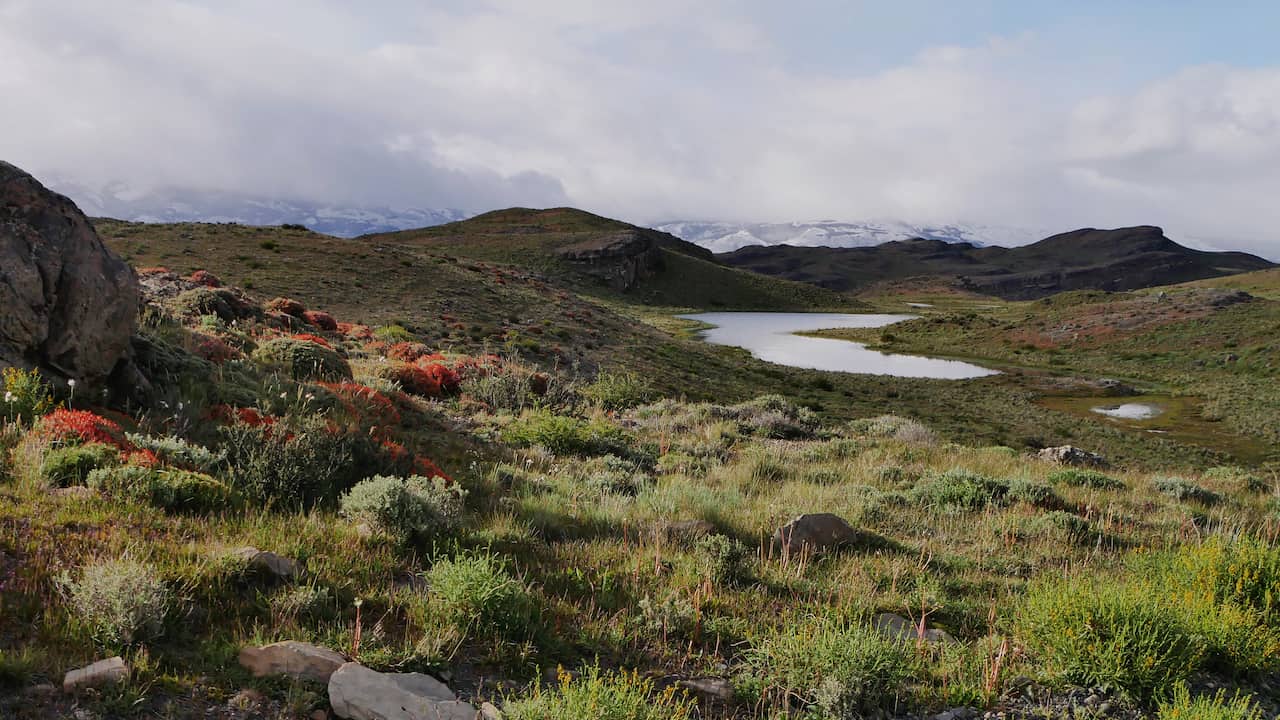
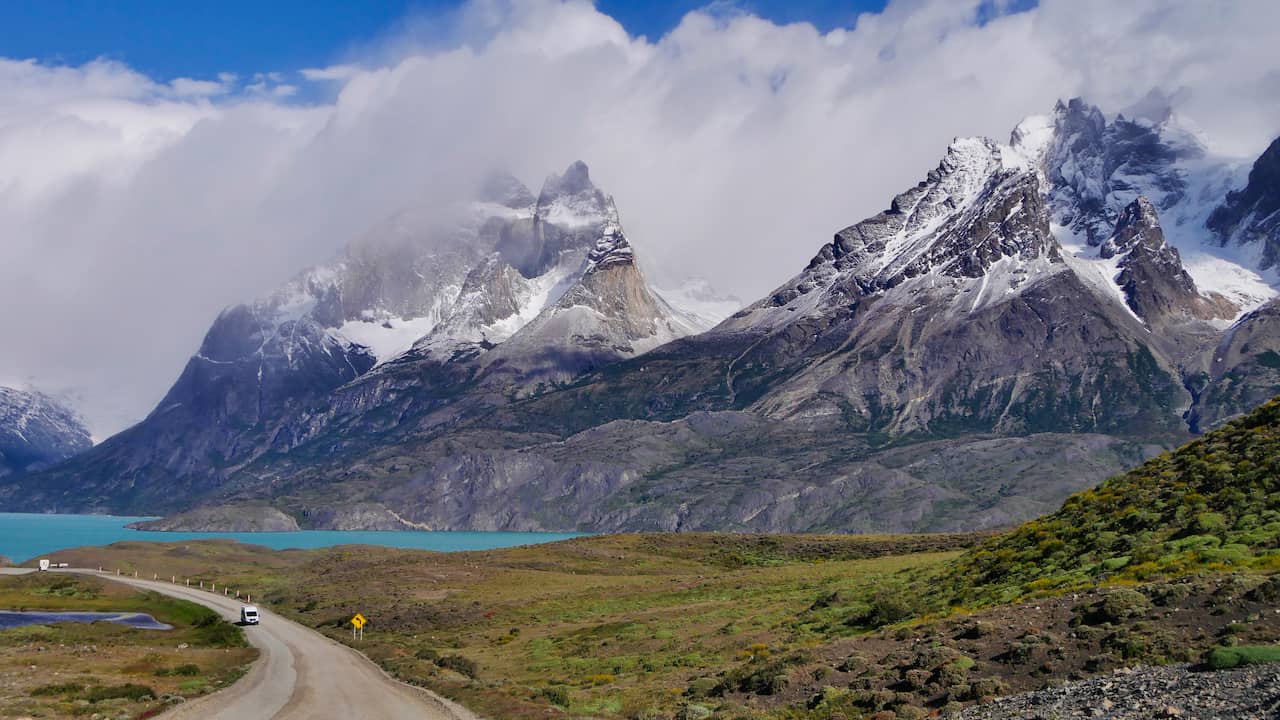
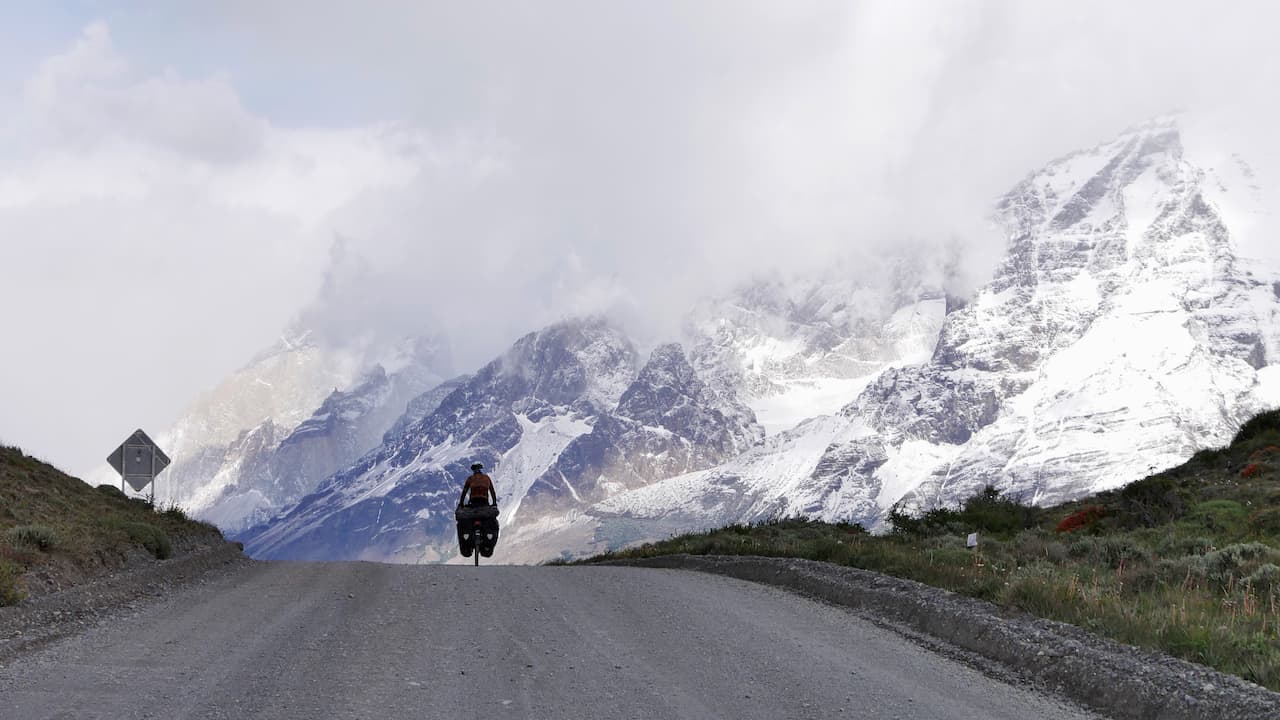
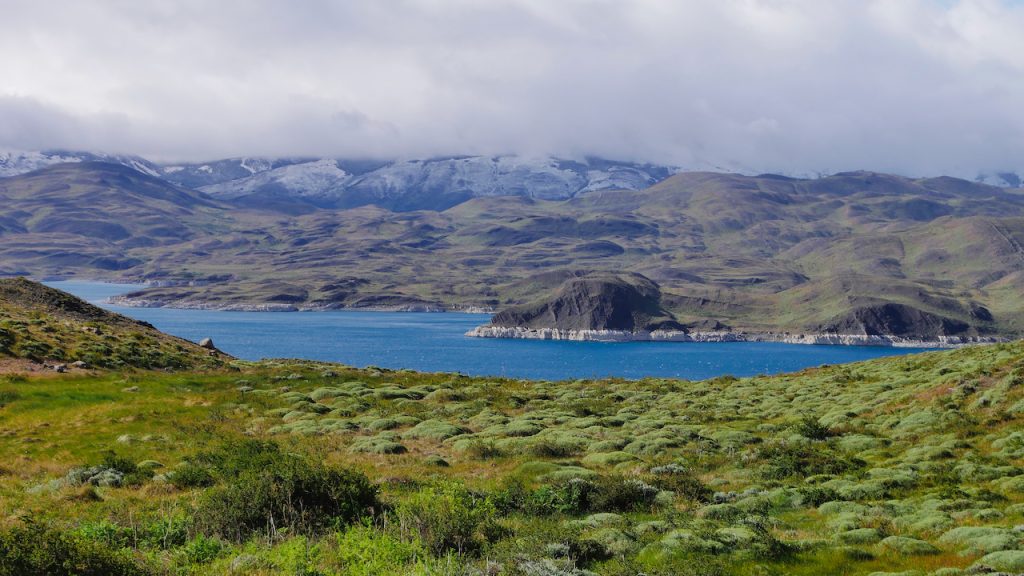

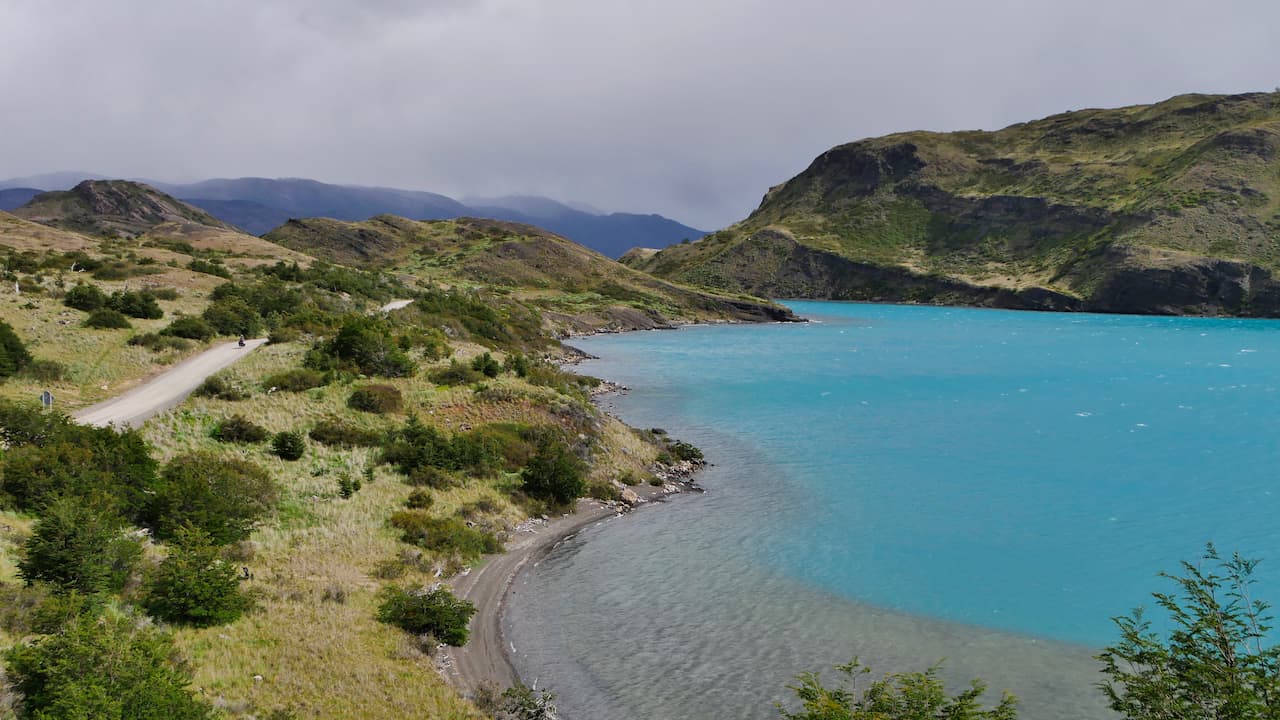
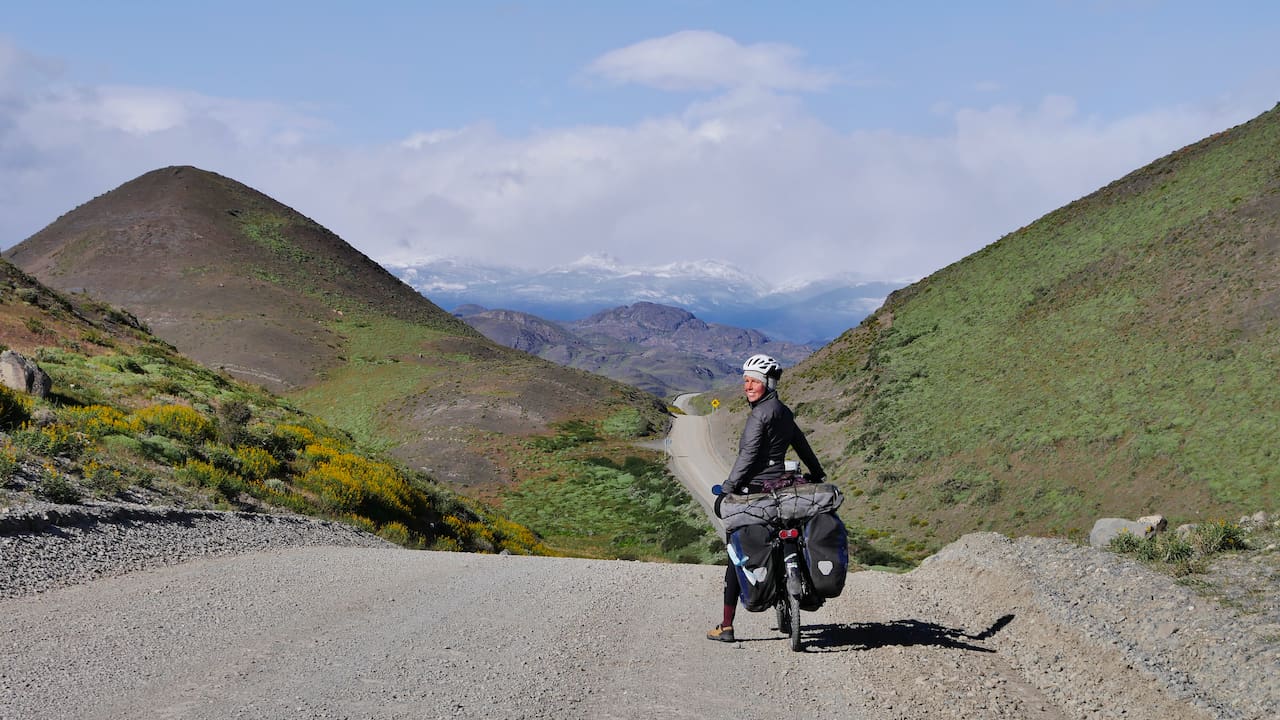
Still, we will definitely not become donors to this park! From the stories of other travelers we had already understood that ‘Torres’ is Chile’s cash cow when it comes to tourism. The entrance fee is high, a camping spot is € 16,- p.p. and there is a large offer of ‘all-inclusive’ glamping, where your luggage is transported for you, meals are included and you sleep in a ‘dome’ (a kind of fancy igloo with a metal frame on a wooden platform and with windows). Whereas on the other roads we encounter more and more bike tourers and hitchhikers, in the park we actually see large numbers of North American and Asian tourists for the first time.
They have not invested in any way in the traveler exposed to the elements. While before (and after) the park there were windbreaks here and there, in the park there are none. At the viewpoints (the “miradors”) we soon saw it in the cutting wind. The cars and vans throw plenty of dust in our faces on the bumpy gravel road. Once we reach the southern entrance, we take refuge inside to warm up and have lunch. There are about 7 young staff walking around there who have nothing to do (but must be paid). They are very friendly and offer us hot water for coffee and a cookie from their own pockets. To my surprise, they say they don’t see many cyclists in the park.
Even though it is chilly and windy, we will still have to bike a bit in search of a camping spot. Less than a kilometer from the entrance, I see that a wire fence is down. It looks like it has been there for a long time. Around the corner of some bushes is a beautiful flat field. Ideal! We eat in the tent, out of the wind. Later, when I go outside to pee, I see the Torres in full glory on the horizon. Because it was cloudy earlier I hadn’t even realized they were there. The next morning I hear Paul shouting enthusiastically as he crawls out of the tent. And yes, in full light, the entire “skyline” of Torres del Paine lies before us! We haven’t had them this beautiful all day in the park. How lucky we are! It just happened to us, for less than a dime in the first row!
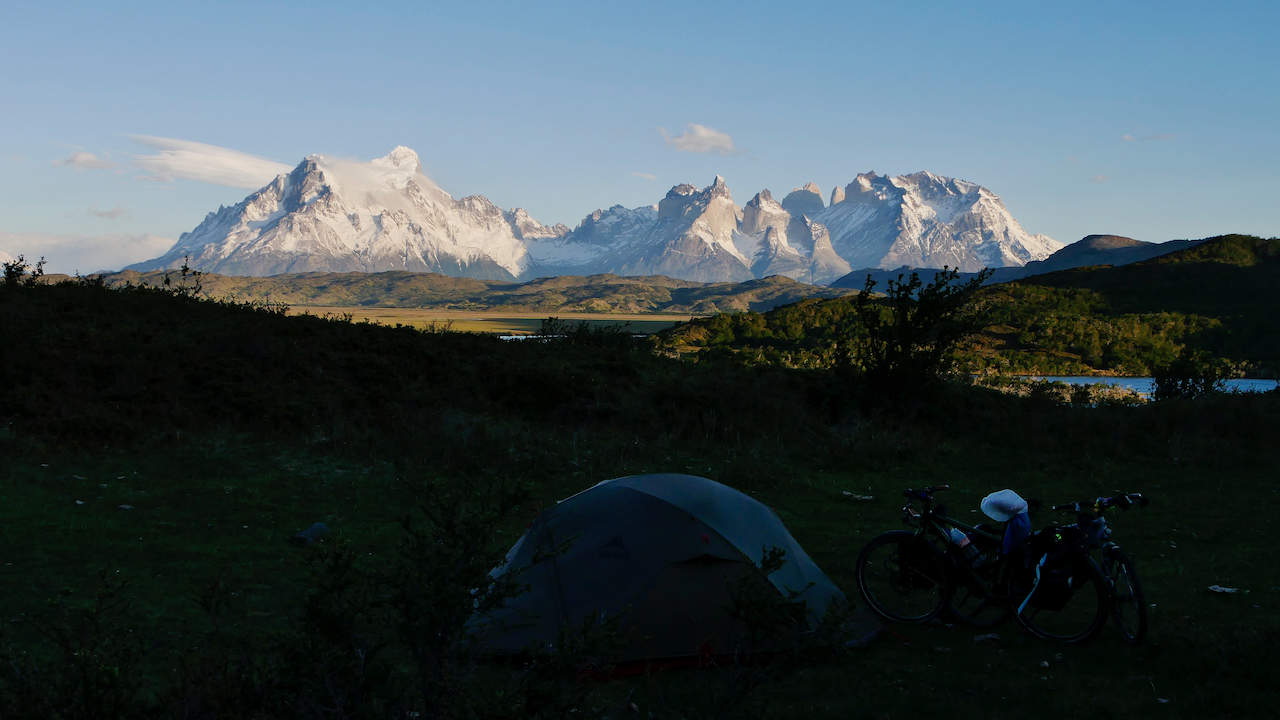
When we get on our bikes a little later, we know that this is the last day of our trip as we head (further) south. We ride in the direction of Puerto Natales. Outside the park, the road surface improves immediately. Because we are riding toward the southeast, the wind is also blowing in our favor. We look back a lot at the beautiful mountains behind us. However, it doesn’t get any more beautiful than that morning. Only just before the city do we get back on the main road including asphalt and traffic. The mountains have disappeared and a flat barren landscape stretches out. How many times in the past few months have we been asked if we are cycling to Ushuaia? The “magical” end point, the southernmost city in the world. Many a cyclist begins or ends their journey in America there. Legendary is the trip from Ushuaia to Deadhorse (the northernmost tip of Alaska, to which I myself cycled via the Dalton Highway some 8 years ago) and vise versa. As a reader, you may also be wondering why we didn’t bike there? We considered that option many times, even before departure and during the trip. For me, it didn’t attract me very much. The pictures I had seen of “Tierra del Fuego,” the island on which Ushuaia is located, showed mostly vast barren plains with lots of wind. We decided to make our choice based on the experiences of others we would hear. The main consideration for many to go there the fact that it is now “the end of the road. We also heard that cycling there was boring. A few actually thought it was fantastic. The balance tipped to the negative side for both of us. We would rather keep those 750 km from Puerto Natales to Ushuaia on the clock and in our legs to spend in Bolivia or Peru.
Puerto Natales was enough “end of the road” for us. Suddenly we saw the ocean in front of us and not much later the salty sea air invaded my nose as well. The city was built like a typical coastal town. Low wooden weathered houses with the paint peeling off. The town is bustling and despite being a stopover for many tourists as well, it has the authentic character of a relatively isolated port town.
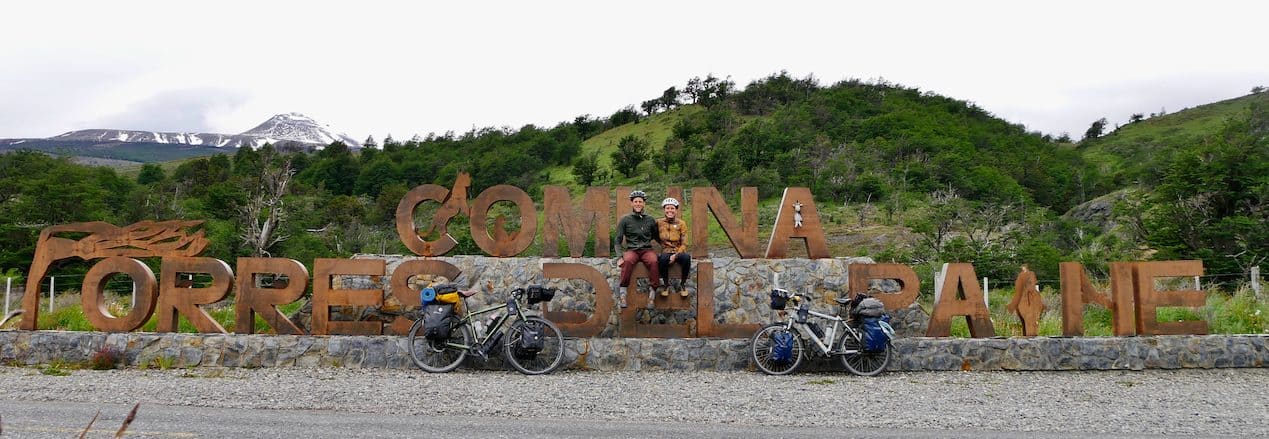
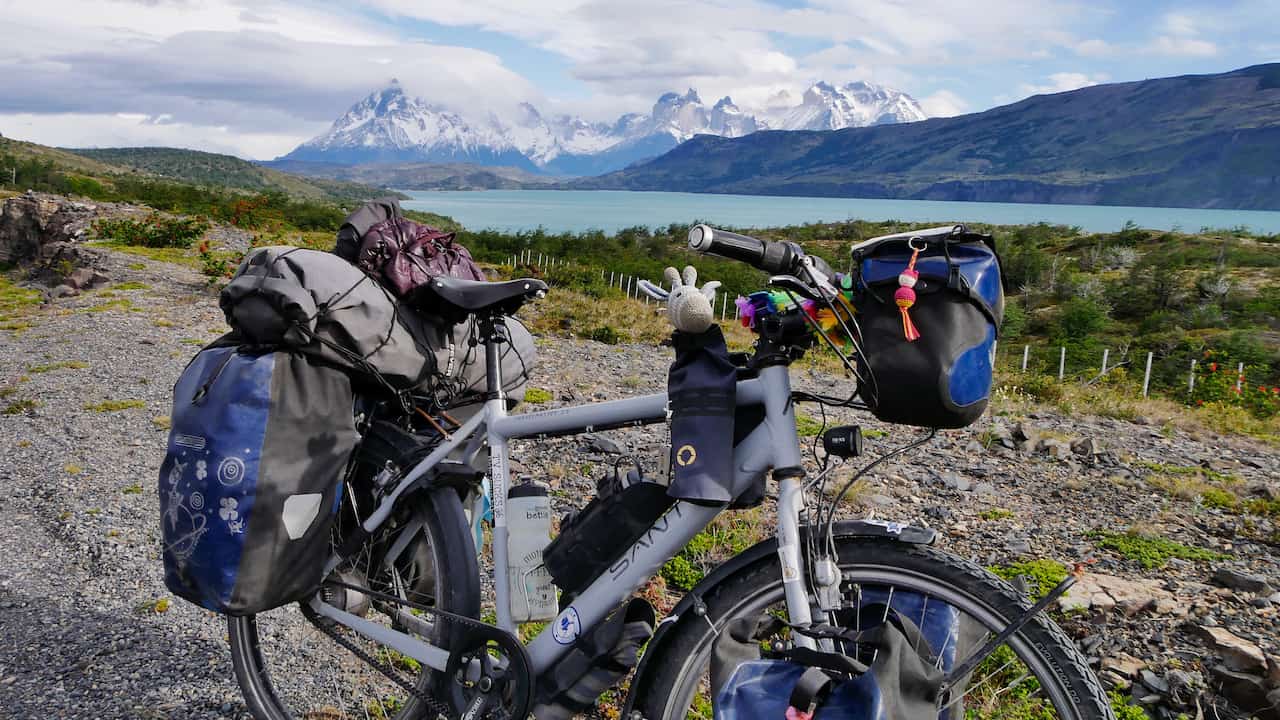
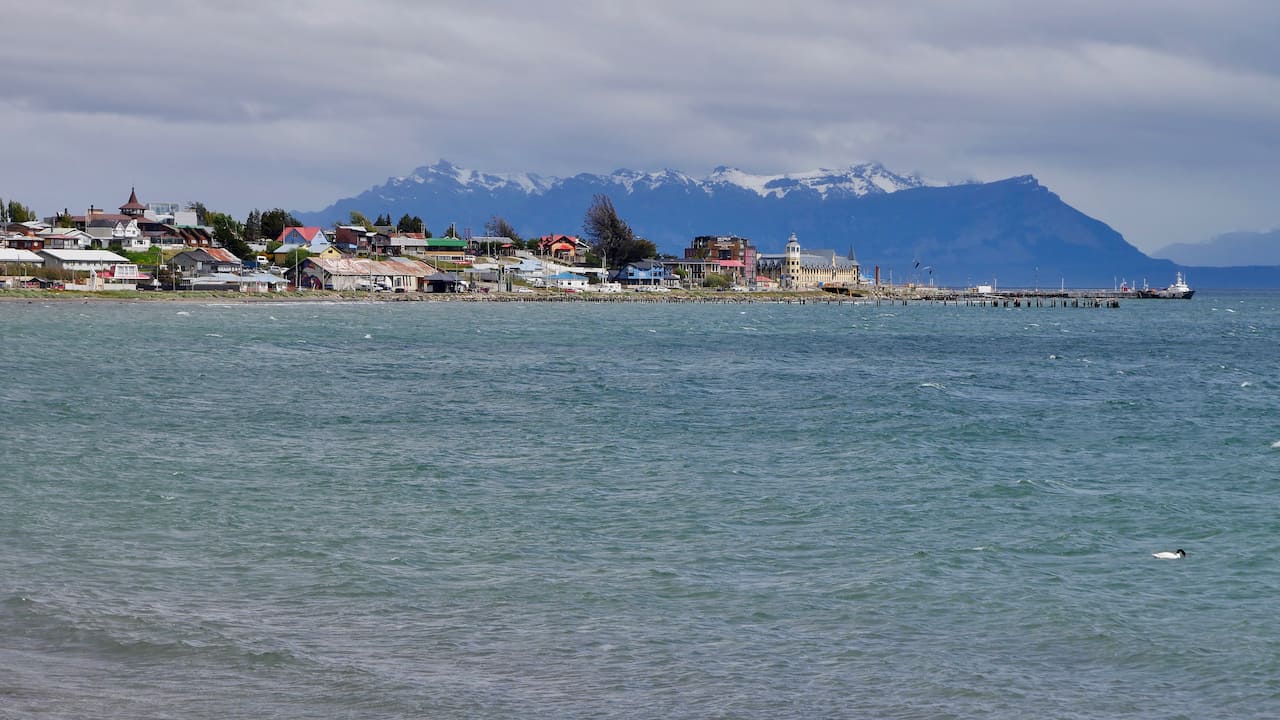
Traveling back north by land from Puerto Natales would mean returning in our own tire tracks. Therefore, we bought tickets for the boat. This sails once a week between the many islands off the Chilean Patagonian coast from Puerto Natales to Tortel (a town on the Carretera Austral). The trip takes about 40 hours. Because the boat leaves at 5:00 in the morning and the airline has had bad experiences with inebriated guests during night boarding, we are expected to board as early as 9:00 the night before departure. Our bikes share the deck with about fifteen cars and a few motorcycles. For passengers, there are two spaces with a layout similar to that of an airplane, but with slightly more legroom. In the canteen on the lower deck, we can get a meal three times a day in turns. Even vegetarians have been thought of!
It feels strange to go to sleep the first night while the boat is still just ashore. On the lower deck I find a children’s playroom. There are some toys and otherwise the room is empty, the lights can be turned off and there are curtains. “Ideal!” I think. I go to fetch Paul and a little later we roll out our mats in our private bedroom. At least, that’s what we had hoped…. Just as I take my sleeping bag off the bike, one of the crew members comes to tell us that we are not allowed to sleep here. Supposedly because a family will be sleeping there. Disappointed, we roll up our mats again. Fortunately, several passengers travel by camper van and now sleep in it. So there are extra seats available. I roll myself up in fetal position and just fit on the seats of two chairs. How people can sleep sitting up is a mystery to me! In the morning, after a broken night, I stretch my stiff limbs with a walk around the boat. When I come below deck, the playroom is still exactly as we left it yesterday. No family to be seen! What a shame that no one here got a good night’s sleep.
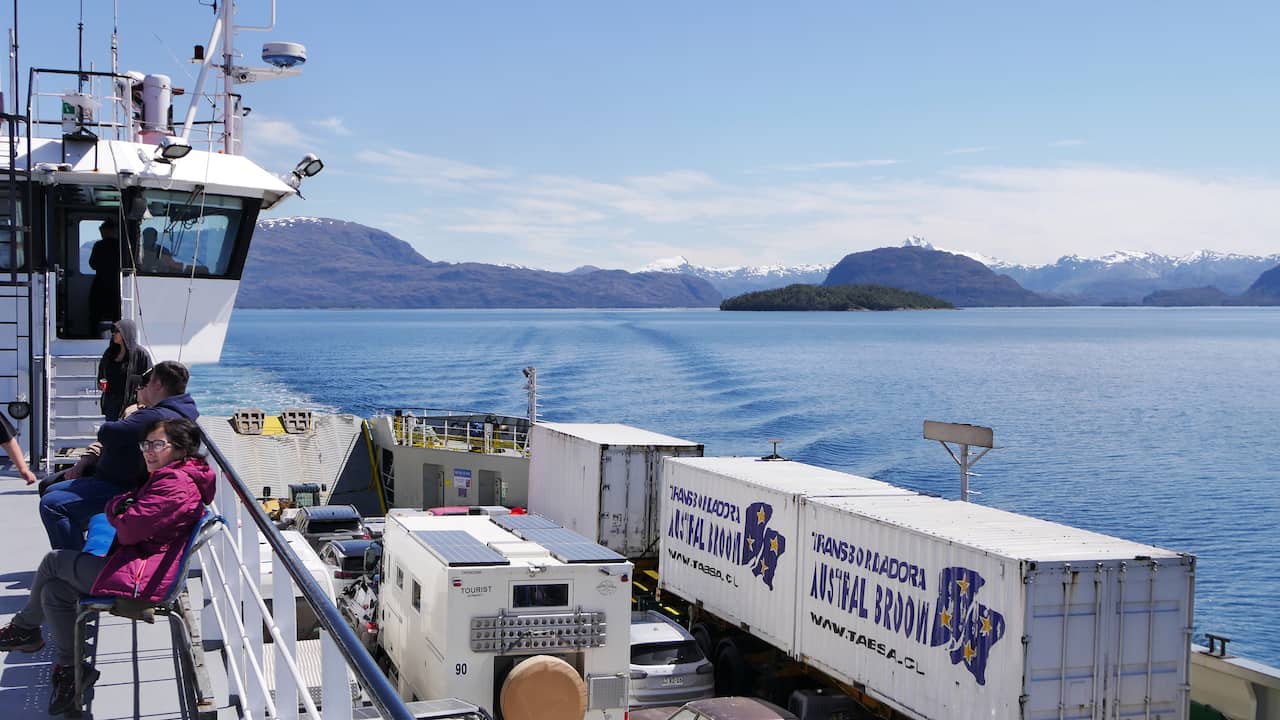
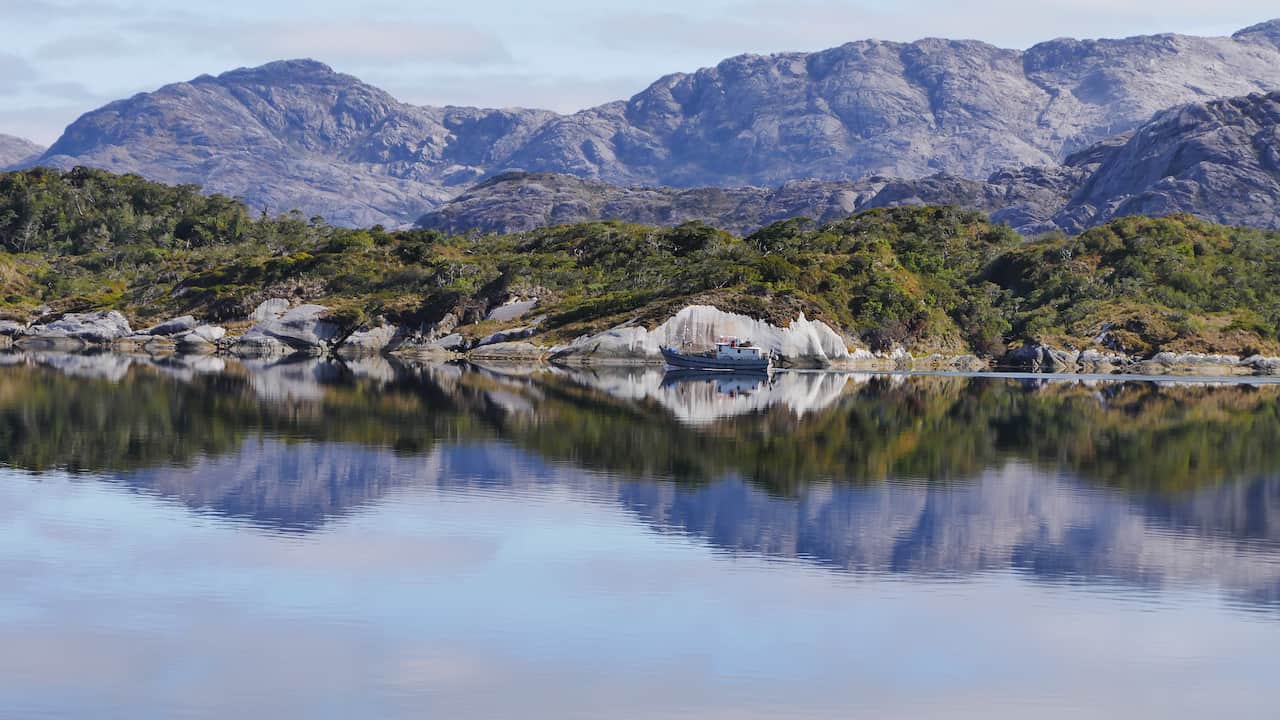
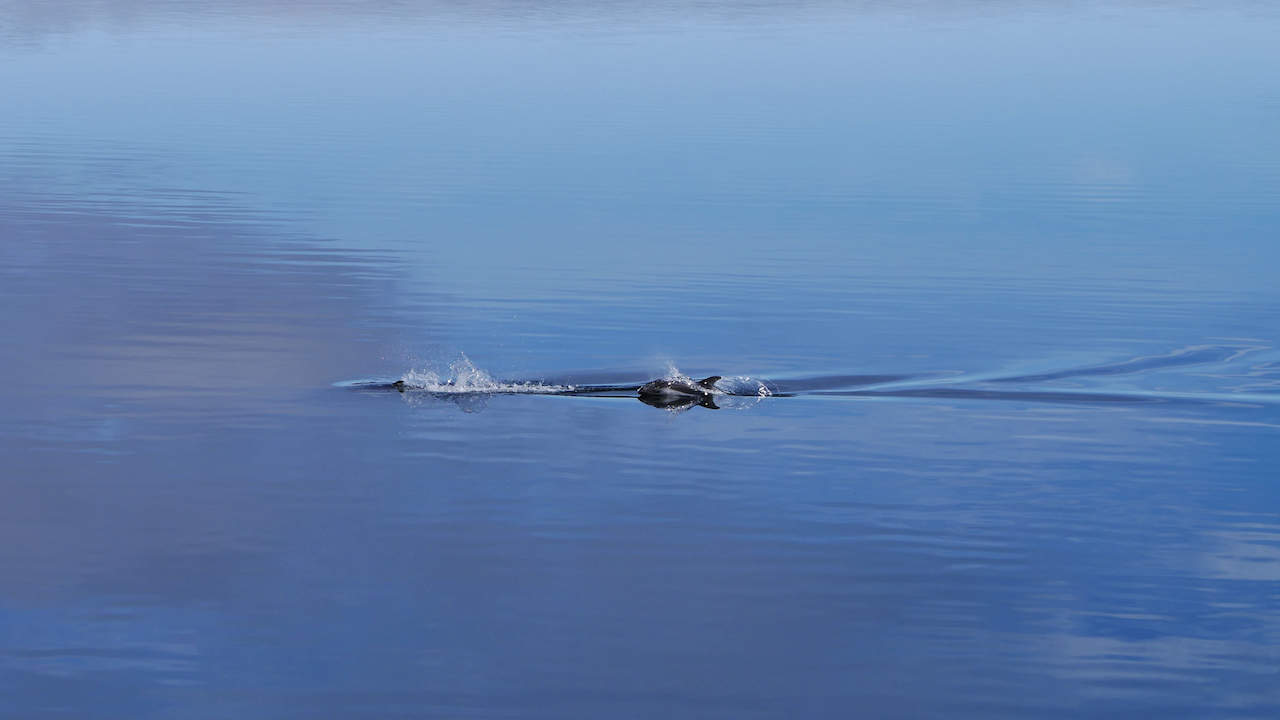
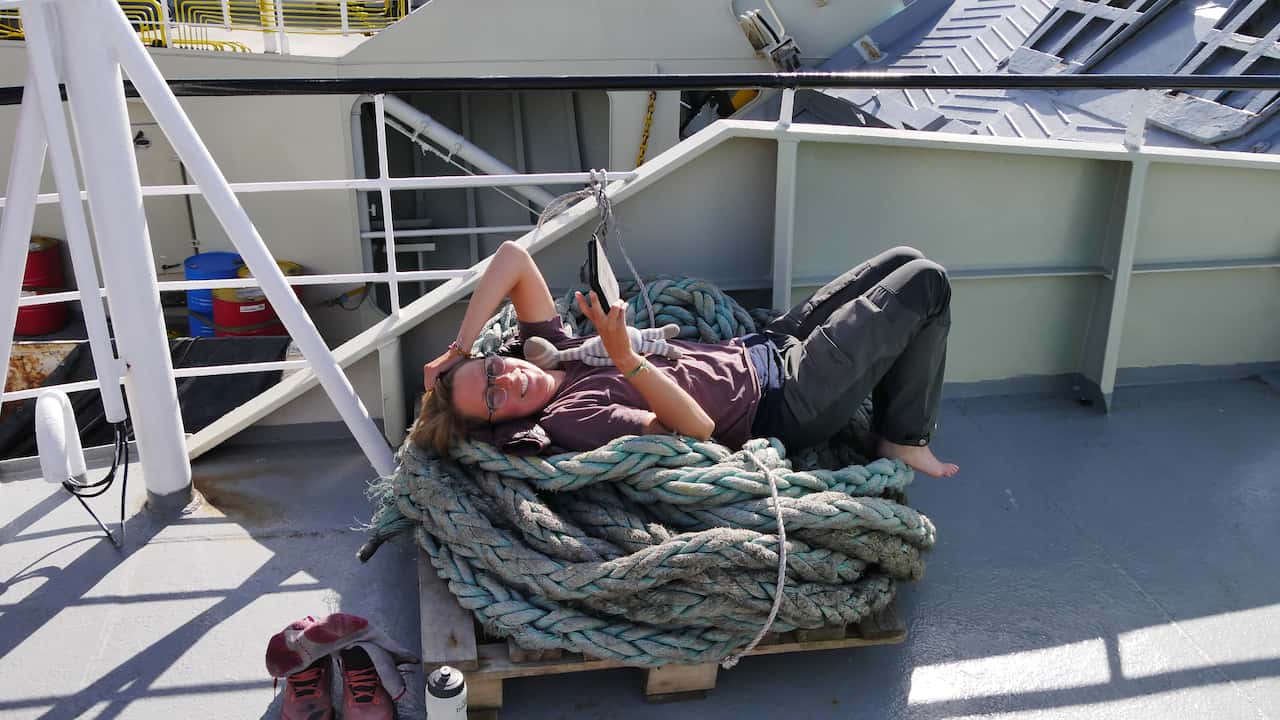
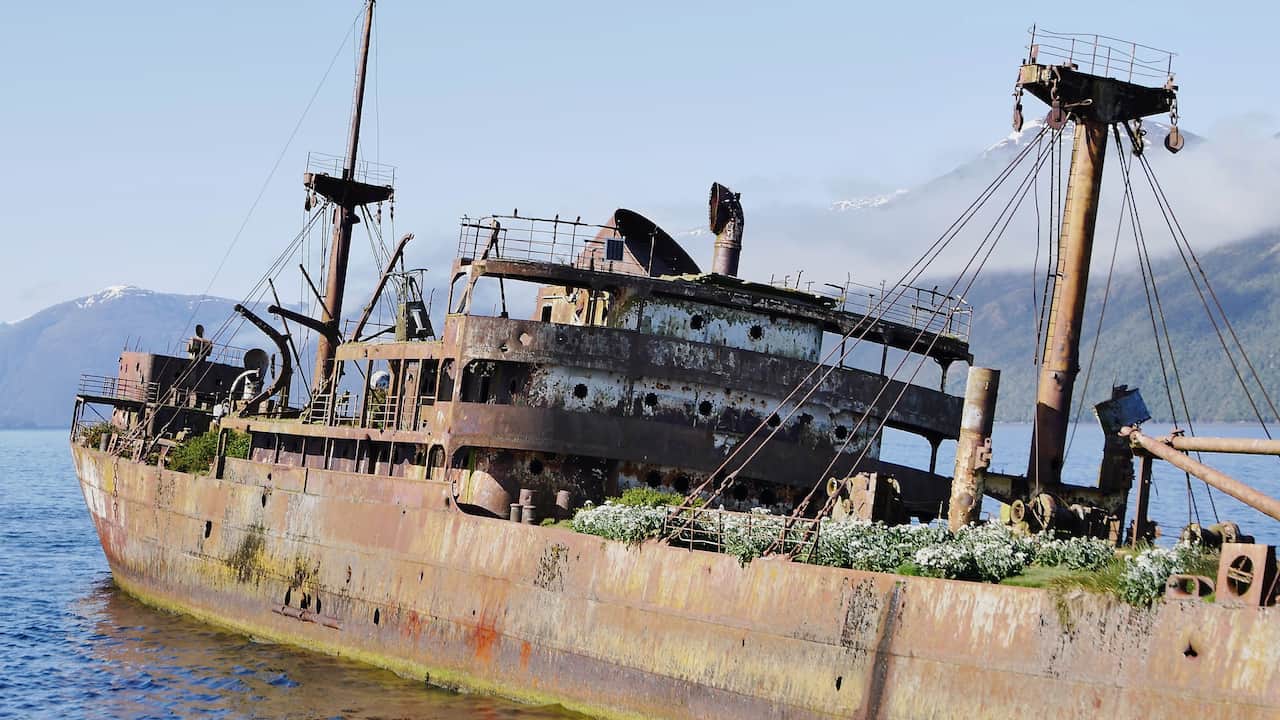
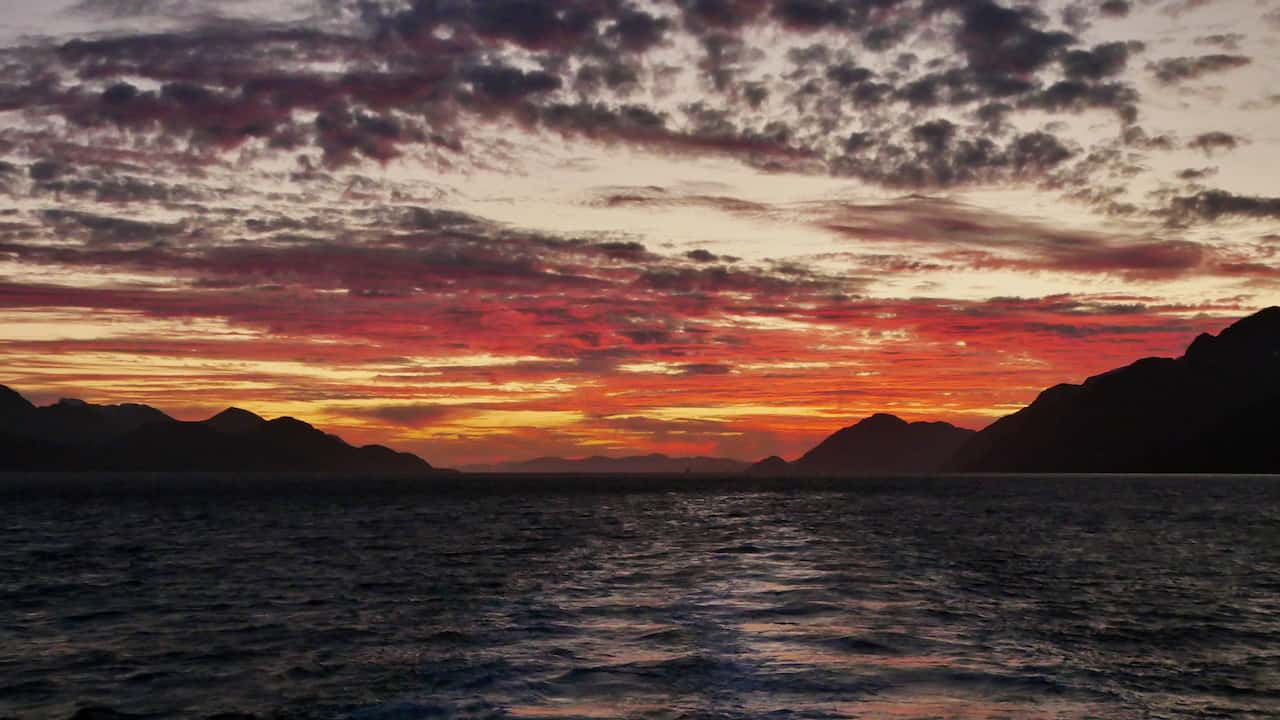
We are lucky with the weather during the two sailing days. The sun is shining full force and the wind is just not too cold. This also allows us to spend the necessary time on the upper deck and enjoy the beautiful scenery we sail through. The three meals break up the day pleasantly. For the vegetarians, not only has the meat been omitted from the meal, but replaced with a surprising amount of vegetables. With amazement I look at the bare meals of the meat-eaters. No need to be jealous of that!
The hours I’m not on deck watching I spend reading “Laura H. The Caliphate Girl from Zoetermeer. After two nights and two days on board, we arrive in Tortel by evening. Only a few disembark here. Anyway, all motorcycles and four-wheelers stay on the boat. They go ashore at Puerto Yungay, a village we have already visited on our bikes. This is because the village is built against a steep slope and instead of streets, the houses are connected by wooden platforms, boardwalks and stairs. Even for us, the only way to get back to the road is to carry the bikes and bags up a good hundred steps. Fortunately, it is dry and still light. My knee is sore from all the sitting still on the boat so Paul largely takes on this task. What a sweet powerhouse!
We take another glance at this quaint village and then decide to cycle away from it in search of a camping spot before the sun sets. We are lucky to find an idyllic piece of “lawn” about two meters down the gravel road, behind the shoulder of the road and located by the river. After two days and nights of being continuously surrounded by people, it is a relief to be back in our little tent with no sound other than the flow of the river.
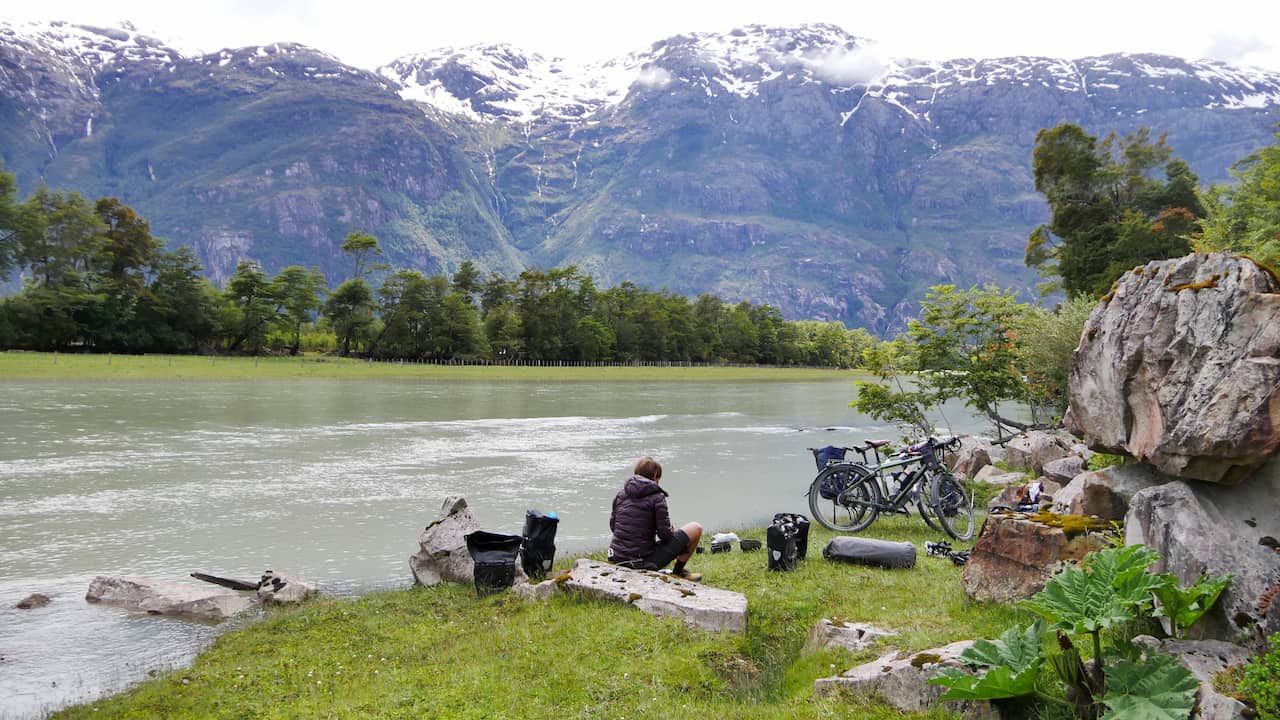
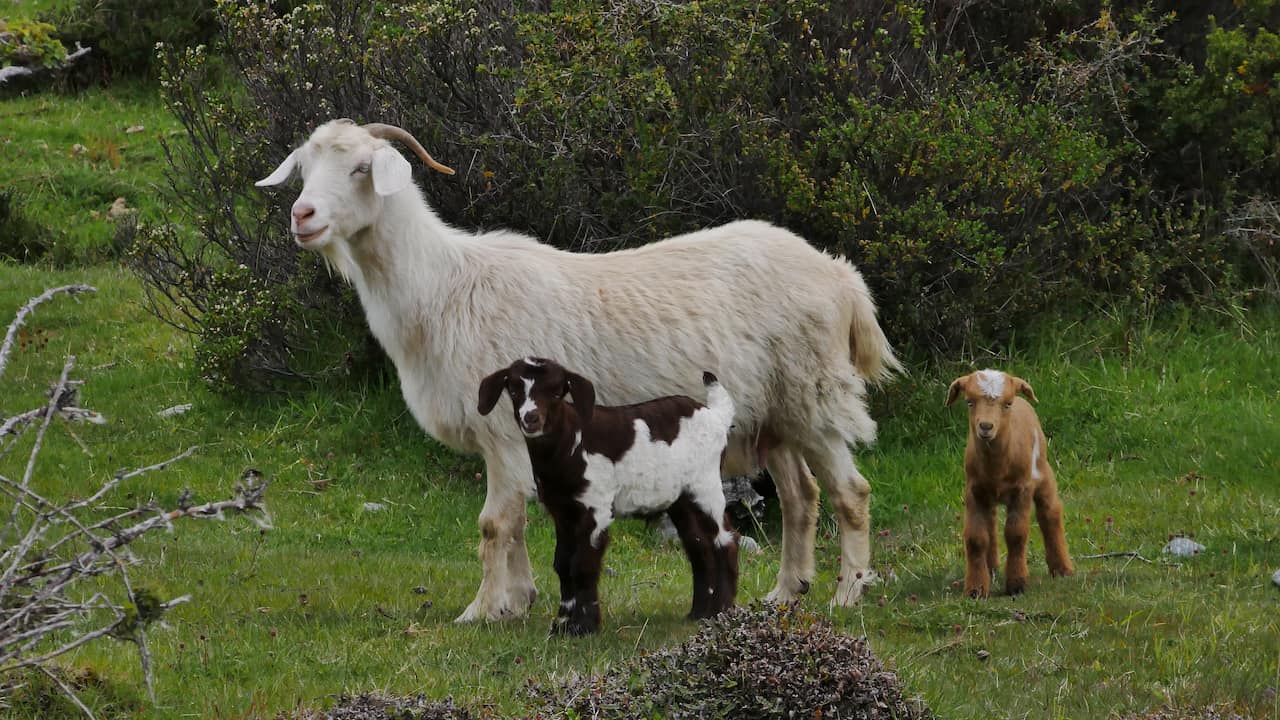

Of the 120km to Cochran that now follows, we have already ridden 100 of them southbound. Never before during a trip have I “double cycled” such a distance. It seemed like nothing to me. Yet it is anything but boring. The scenery is beautiful again and we now see it from a different perspective. In addition, discovering landmarks and reminiscing about the previous trip here gives a pleasant feeling. “We know it here! Somewhat at home, we feel. In doing so, much is different. Last time we had rain here, now plenty of sunshine! As a result, huge clouds of dust when cars pass us. This time we also encounter several cyclists riding south. They react surprised that they don’t have to tell us what to expect…. normally one of the main questions when two cyclists cross paths.
Just as Paul has climbed a small hill to take a picture of me, another cyclist approaches me. Paul shoots a few pictures of our encounter. I have to laugh when I look back at them. We look like two little dogs sniffing each other’s behinds when we first meet. It’s really not that different either. Let two unknown bicycle travelers meet and they sniff each other’s gear and plans and see if there is anything for them to “get” from the other. Sometimes we only introduce ourselves to each other by name at the end of the conversation. Of greater importance is, “Where are you cycling to? Where do you come from? How long have you been on the road?’ After this curiosity follows fetching: ‘How do you like that …(insert name of part of bike or equipment here)…? Where did you sleep last night? How is the road surface/climb/decline in the next … kilometers? Many a time only when these questions have also been answered from both sides does the question follow: ‘What is your name actually?’
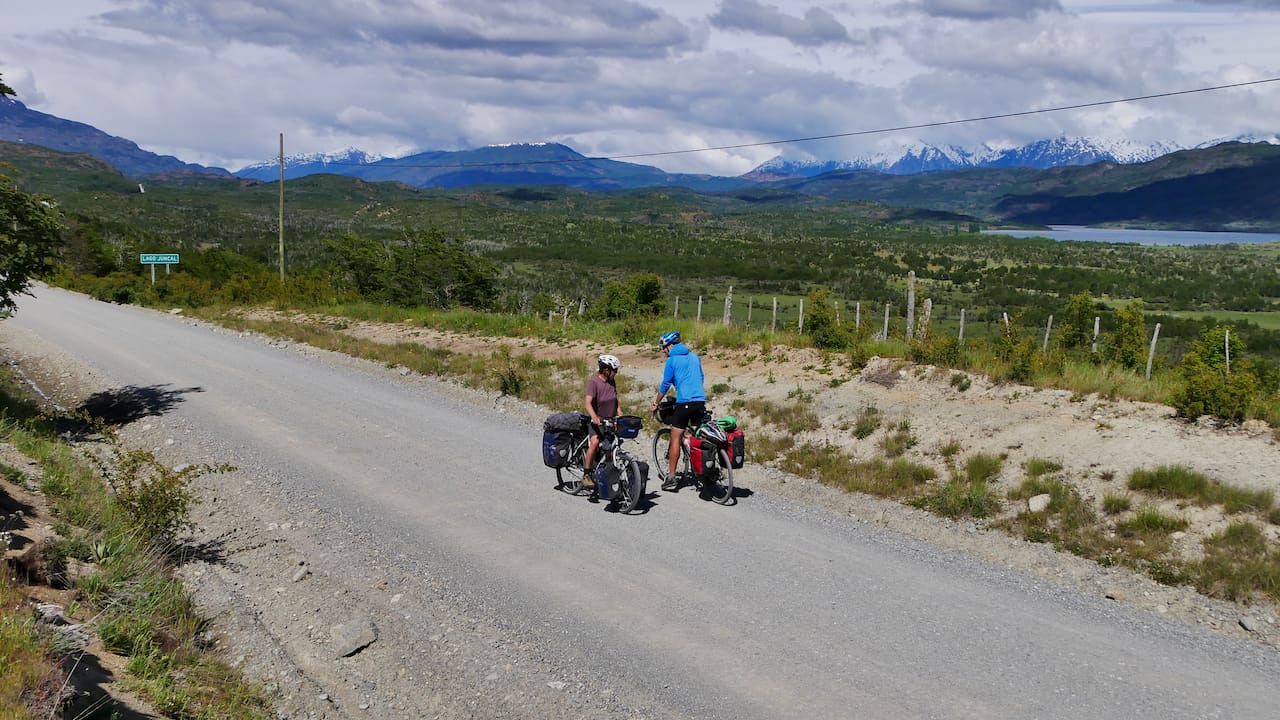
During my previous trips, when I cycled alone, meeting another cyclist was often a special occasion. I also wrote about this several times at the time. ‘FINALLY’ someone ‘like me’. Someone who knows the beat, the rhythm, the fears, the fun! Now I have someone like that beside me 24/7 and the need to spend time with another cyclist is less. In addition, the number of cyclists we encounter here is unprecedented. Many a cyclist here in Patagonia is also “only” here for a few weeks. Cycling the Carretera Austral in his or her vacation. But even with long-term cyclists, it is denser here than I have experienced before. So that I it also ‘less special’ for everyone to encounter other cyclists. And finally, there is an APP GROUP for people who cycle (or have cycled) through Latin America. The messages I see passing in it sometimes make my mouth drop open in amazement: ‘Is there anyone in El Chalten who fancies a beer tonight? Is anyone driving from Santiago (Chile) to Mendoza (Argentina) next week who can bring a Schwalbe tire?’ It seems like a group outing.
I am regularly told that perhaps I should have been born in a different time. I would rather live without computers, without smartphones, let alone AI (artificial intelligence). Who still cycles today with a paper map on top of the handlebar bag? I do! And no, I don’t want a local sim card so I can have internet everywhere! Nor can I deny that my needs would have fit me better in another time.
So that app! And yet I’m still in it … because sometimes it’s quite handy to be able to ask a question about a particular track. And apparently the “former” forums have now been replaced by such an app group. But for heaven’s sake, let it remain a surprise who we meet on our path. And let the journey remain a Journey and an Adventure.
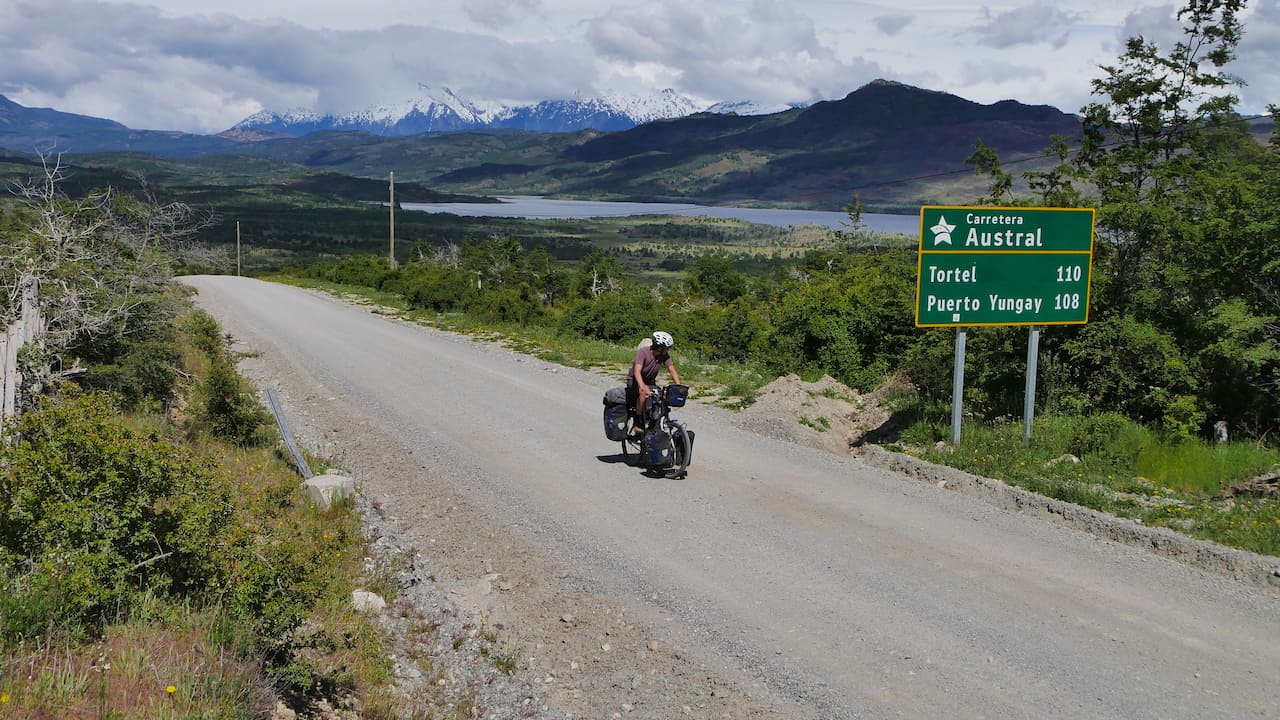
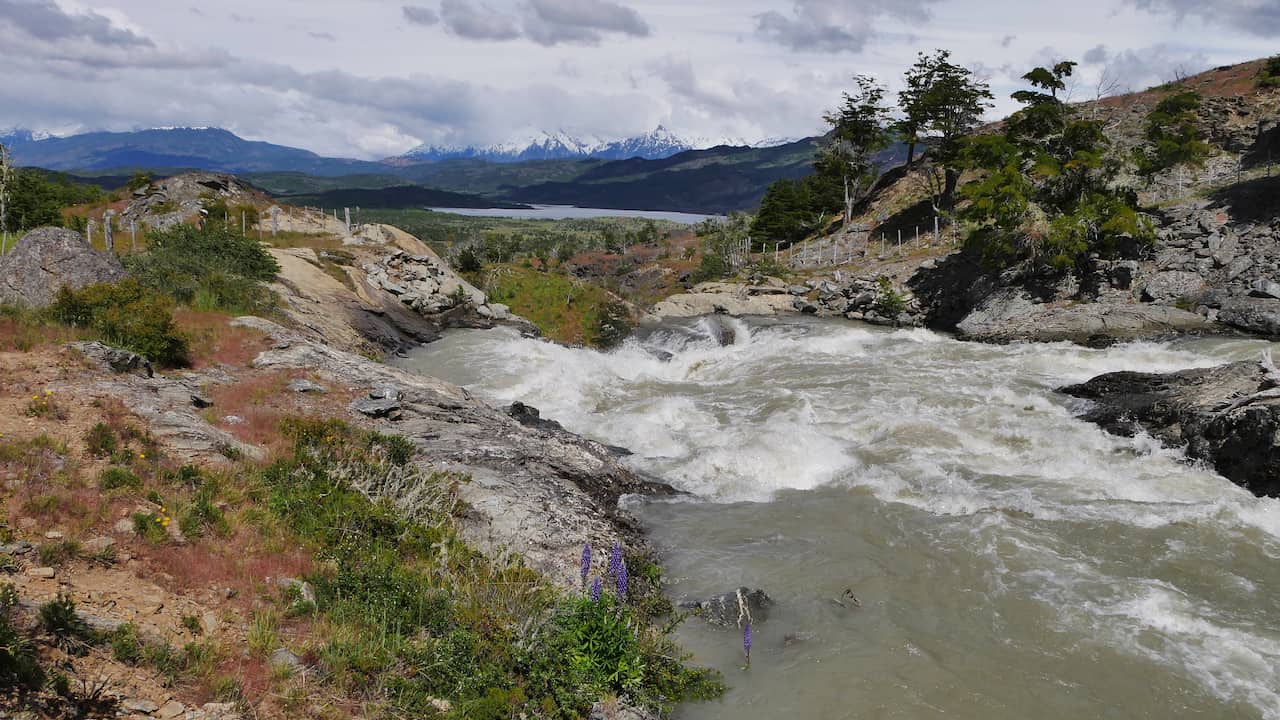
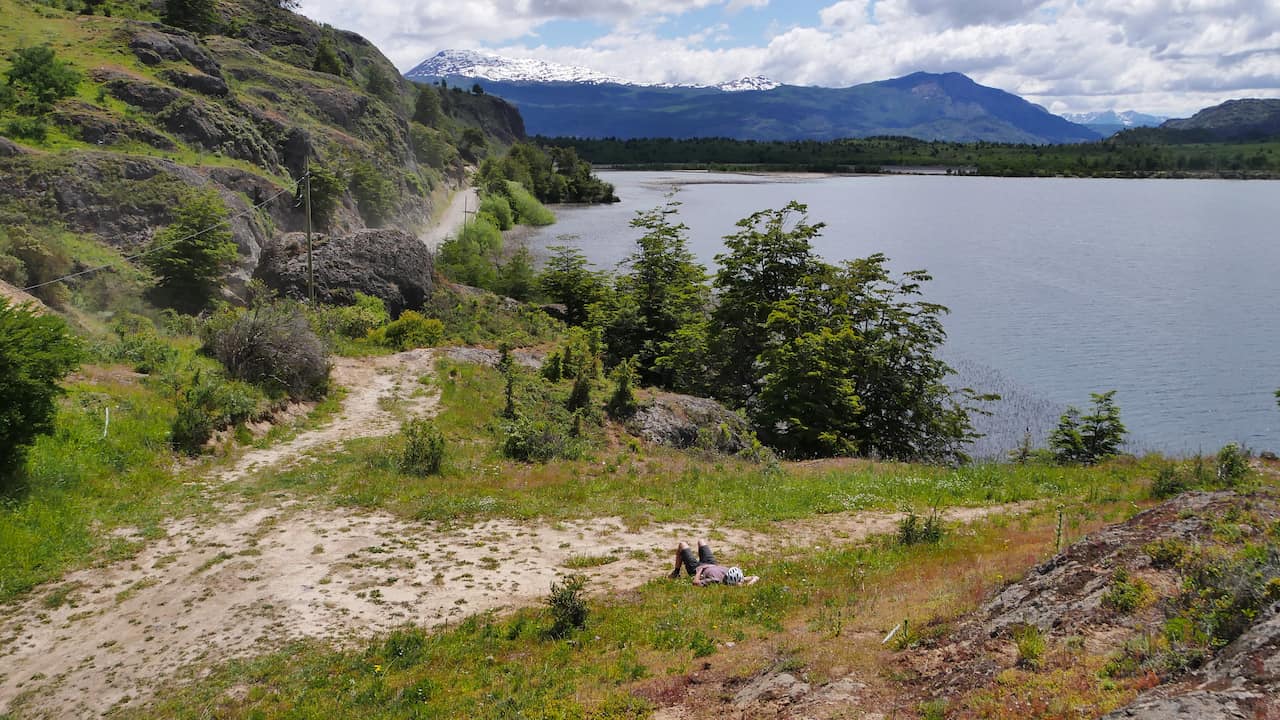

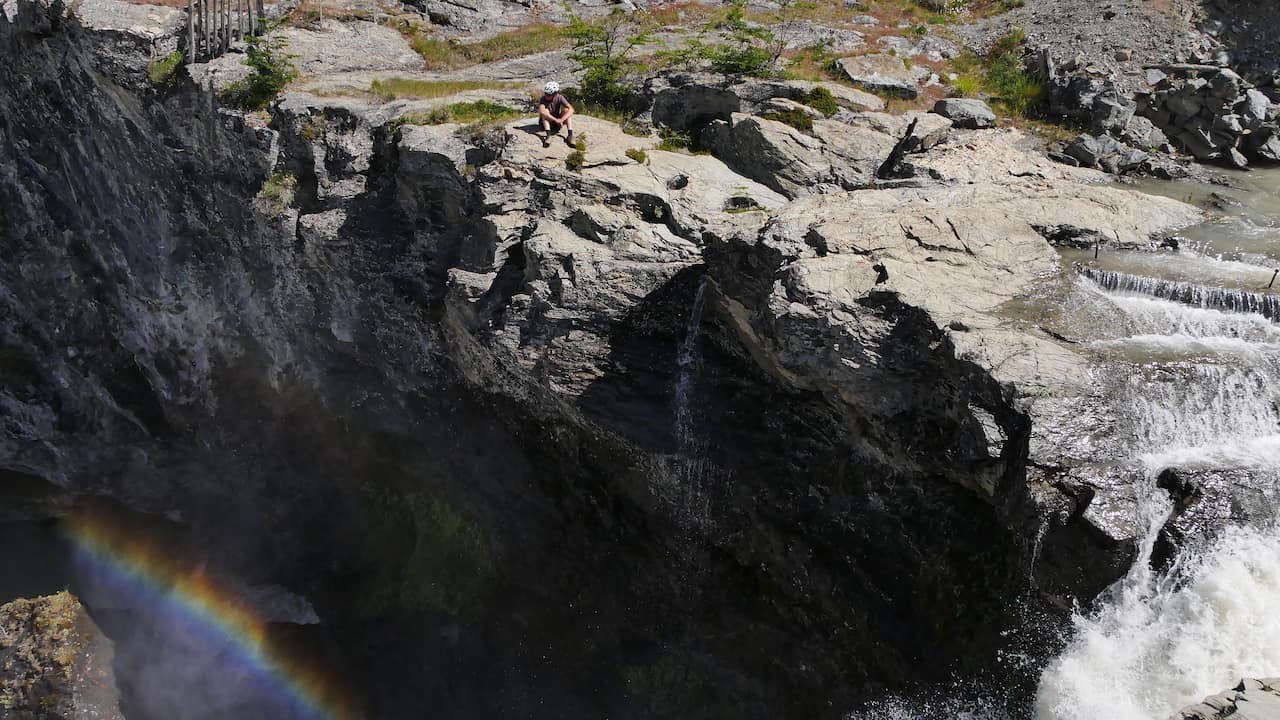
After 2.5 days of cycling we arrive in Cochran. After a stop at the supermarket we ride on to a campground that we liked. With the whole-wheat flour I bought at an exorbitant price (over €4 for a kilo) I bake (just like in the good old days) two loaves of sturdy bread. We can go on for a while!
The next day we decided to deviate from the Carretera Austral for 20km. The known route consisted of bad gravel and because of the national park there is a lot of traffic there. Our alternative route requires us to cross by a small ferry. It has to be one long steep climb and then an even steeper descent. The little road is just wide enough for one car. There doesn’t need to be much traffic, because habitation is also very scarce. All the more beautiful is the route! The further we climb, the more idyllic. Bright green meadows with here and there a cow watching us, beautiful views over the valley and playful green trees spread over the slopes. As I crawl forward in utmost concentration I notice that Paul has had to dismount behind me. Normally it’s the other way around! But I am on a roll and want to push on. As I crawl forward I realize that so many things must be harder than this climb. Surely there must be hidden strength in me somewhere? What if by finishing this climb I could save a life? How long could I then cycle before having to dismount? With my runaway imagination I squeeze all the strength I have out of my body to keep going in circles. When I get to the top I sit down in the grass, waiting for Paul. When he comes up he looks at me in disbelief: “How did you do that? That you could stay on your bike!’ I tell him my little secret, but he doesn’t believe it makes him drive faster. I do! I think I was even less tired once I got to the top than I normally would have been….
We can ride all the way down back to the Austral or…. we can lie in the sun in one of those lovely meadows and enjoy the beautiful view and peace and quiet. We choose the latter! We wash ourselves with the water from a small stream and, since only one car has passed us during the whole trip anyway, we lie in the sun with our bare bottoms after washing. Let the summer begin!
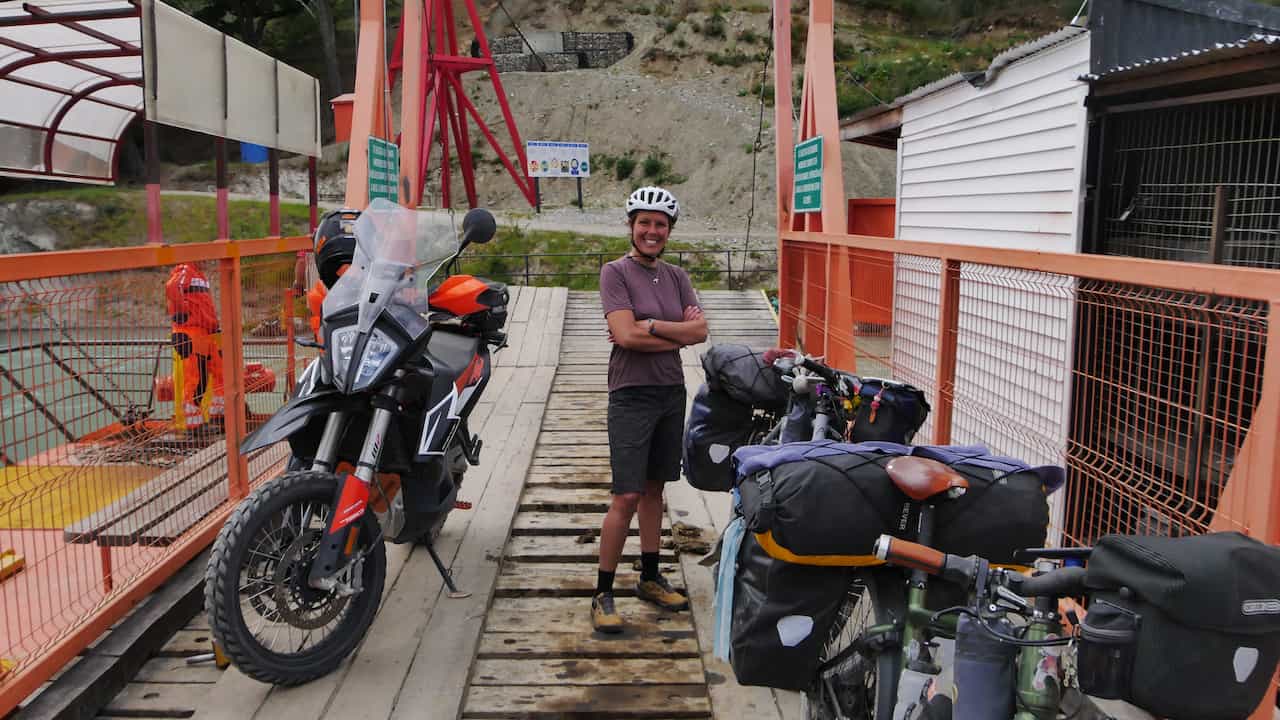
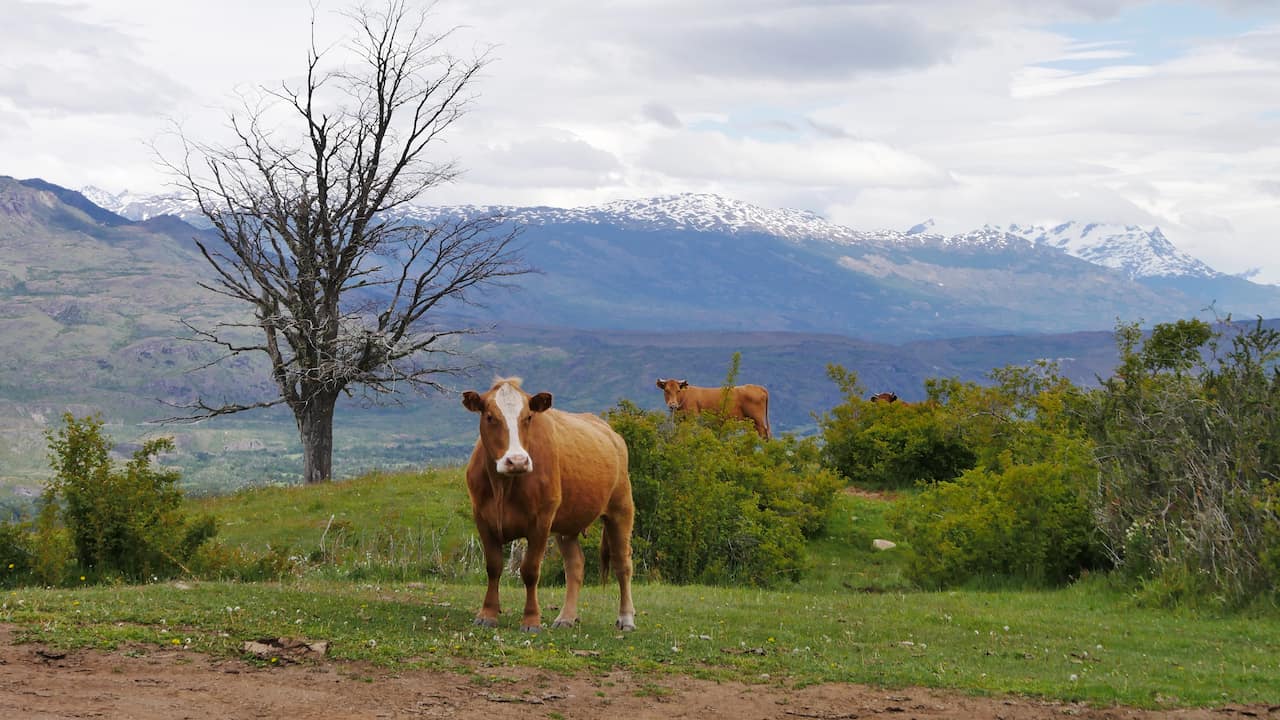
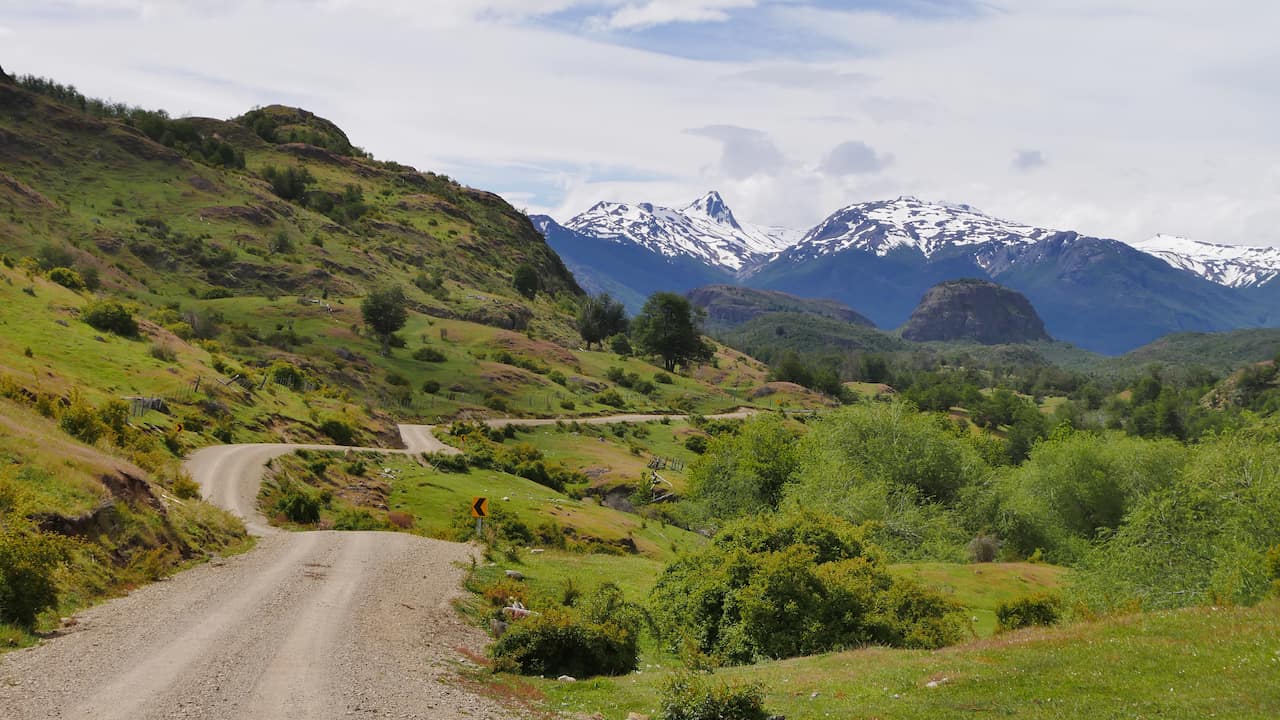
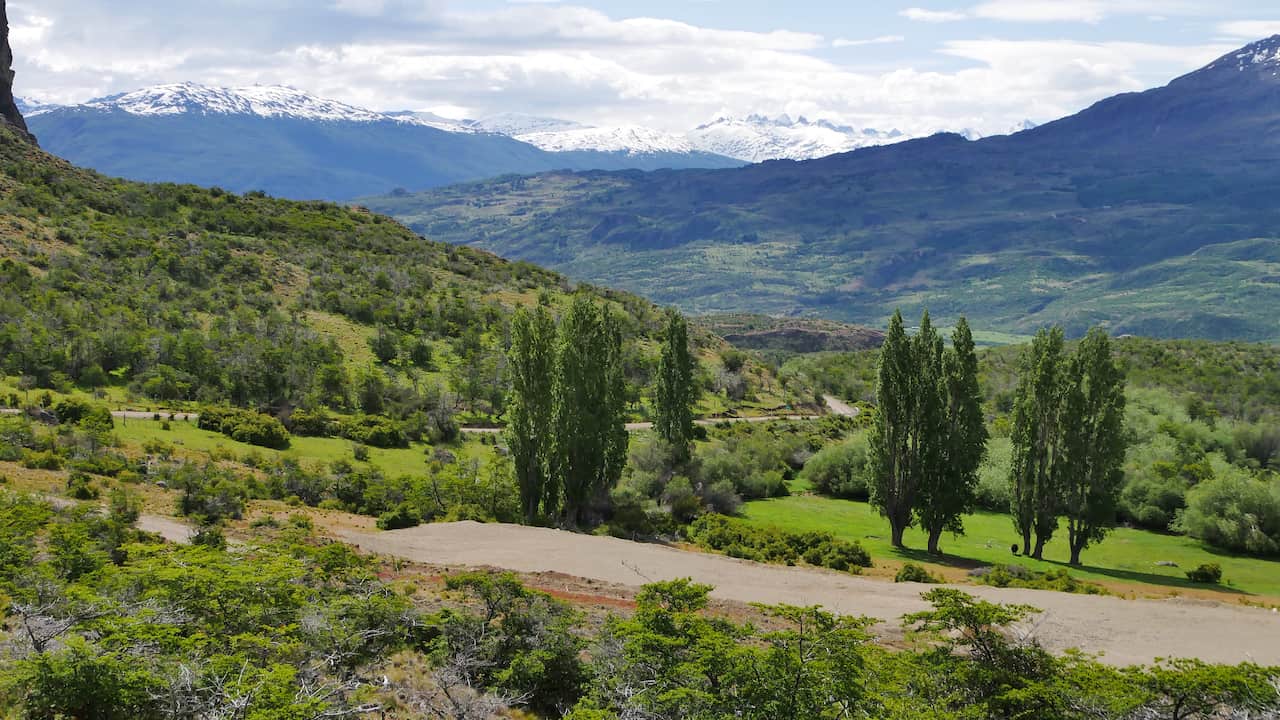
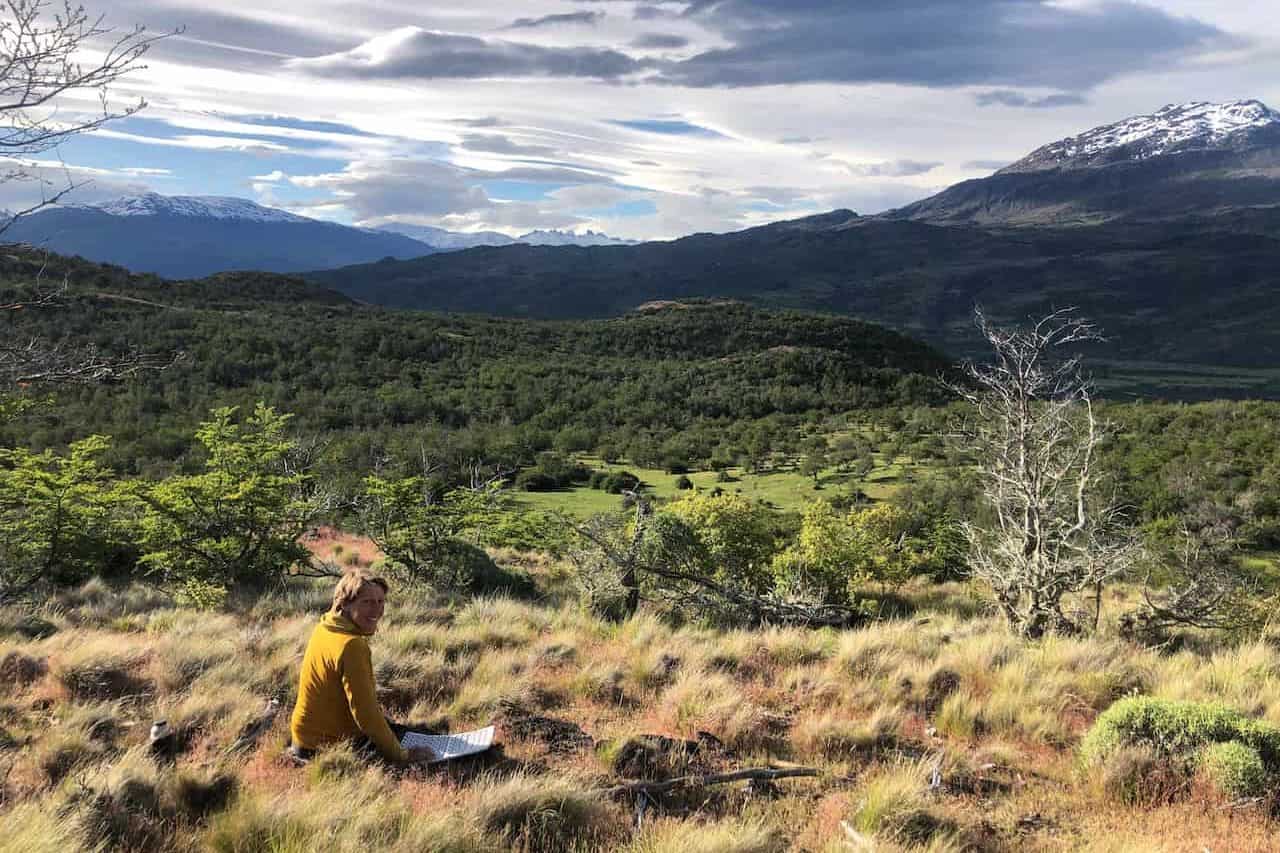
The next day we descend toward the main road and stop at the ‘Confluencia’. Last time we saw the confluence of two rivers only from a distance as we camped overlooking it. This time we get off our bikes to take the walk down to the confluence. Another cyclist also just arriving there, convinced by us, walks with us. It is extraordinary how the gray water of one river mixes with the bright blue water of the other. When we return to our bikes, three other cyclists who want to walk toward the river just arrived. As I wrote, this place is teeming with cyclists during the summer months. That same ride we meet two more (older) men who have come biking from Brazil, a French couple who cycled from Colombia and an English couple who just started their ride. We camp by a lake where we build a nice big fire, although for warmth it is not even really necessary this evening.
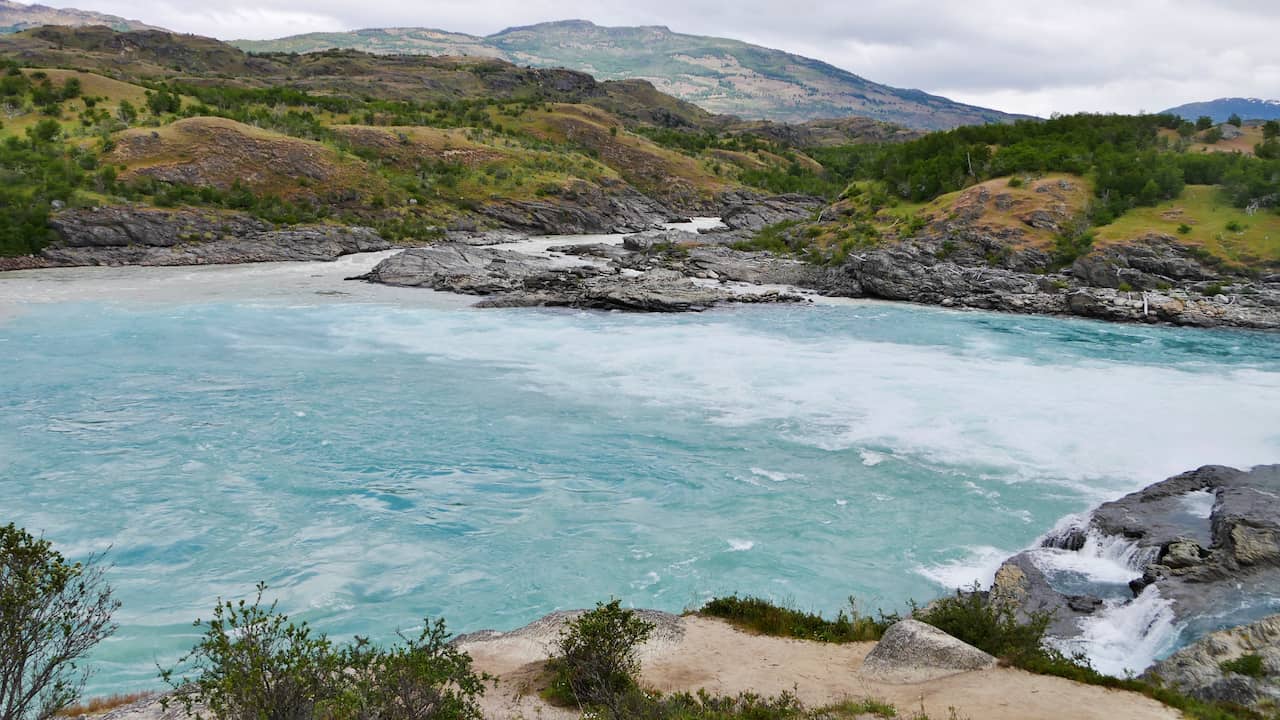
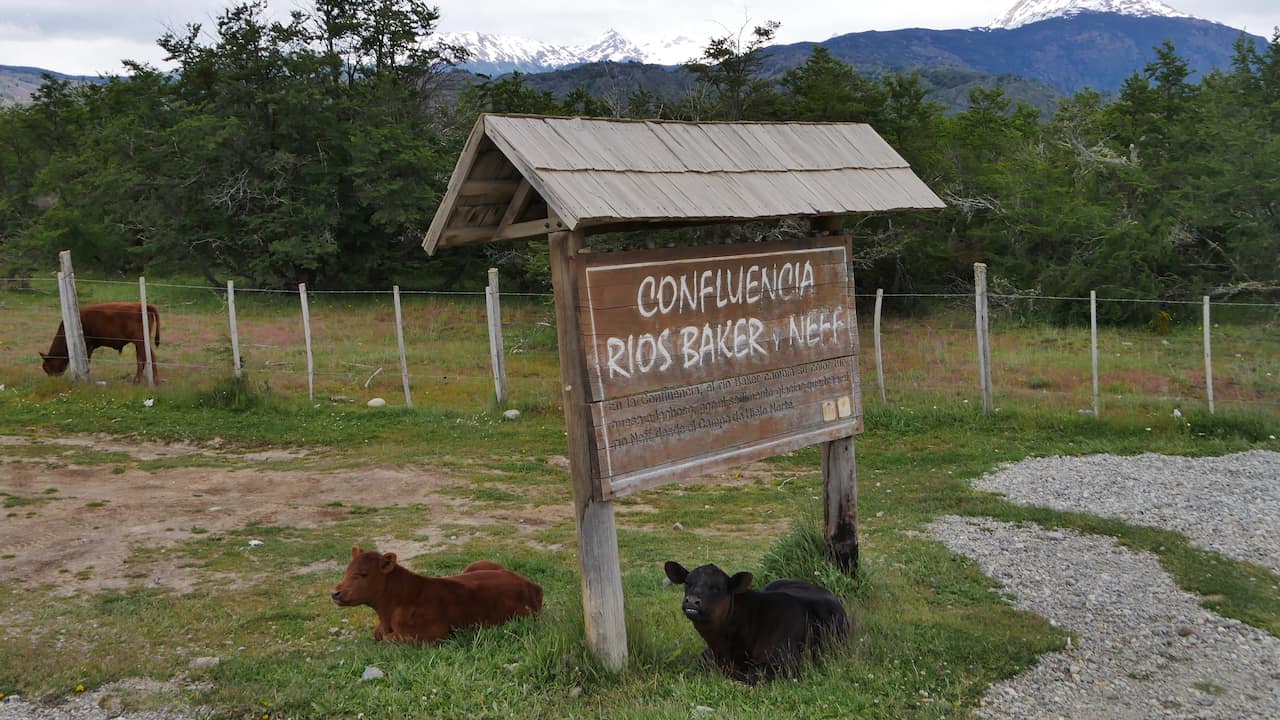
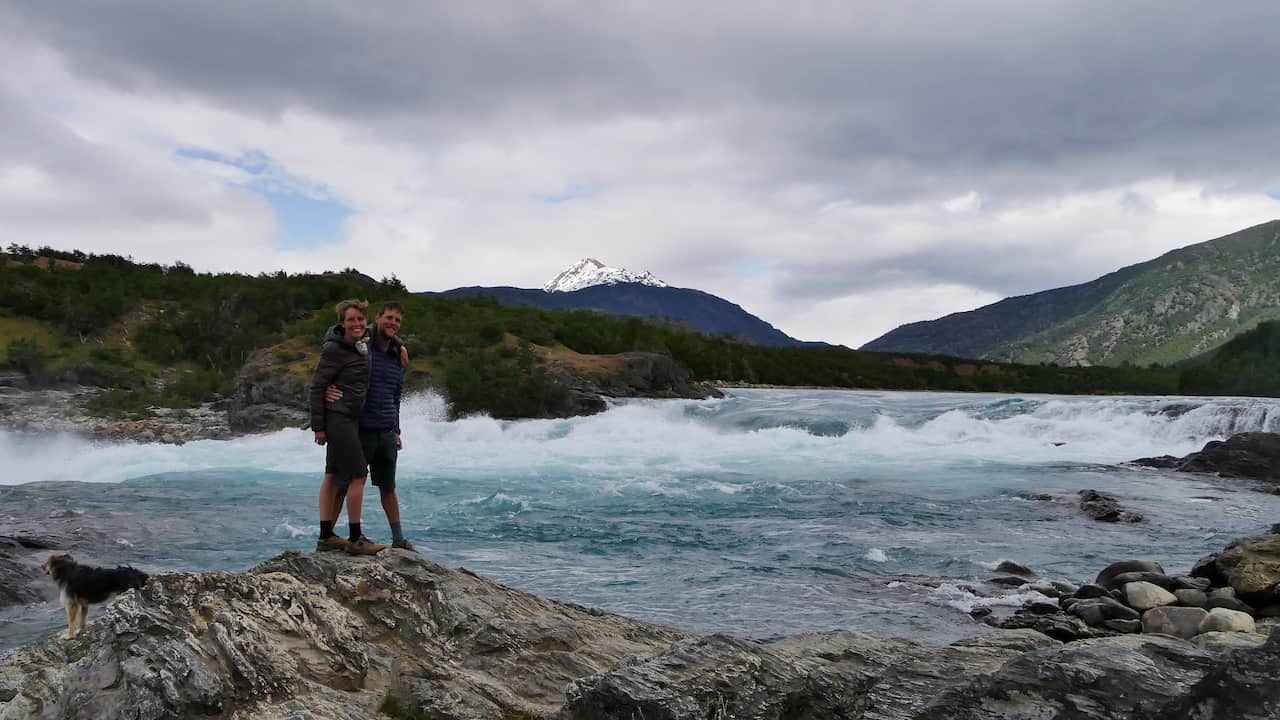
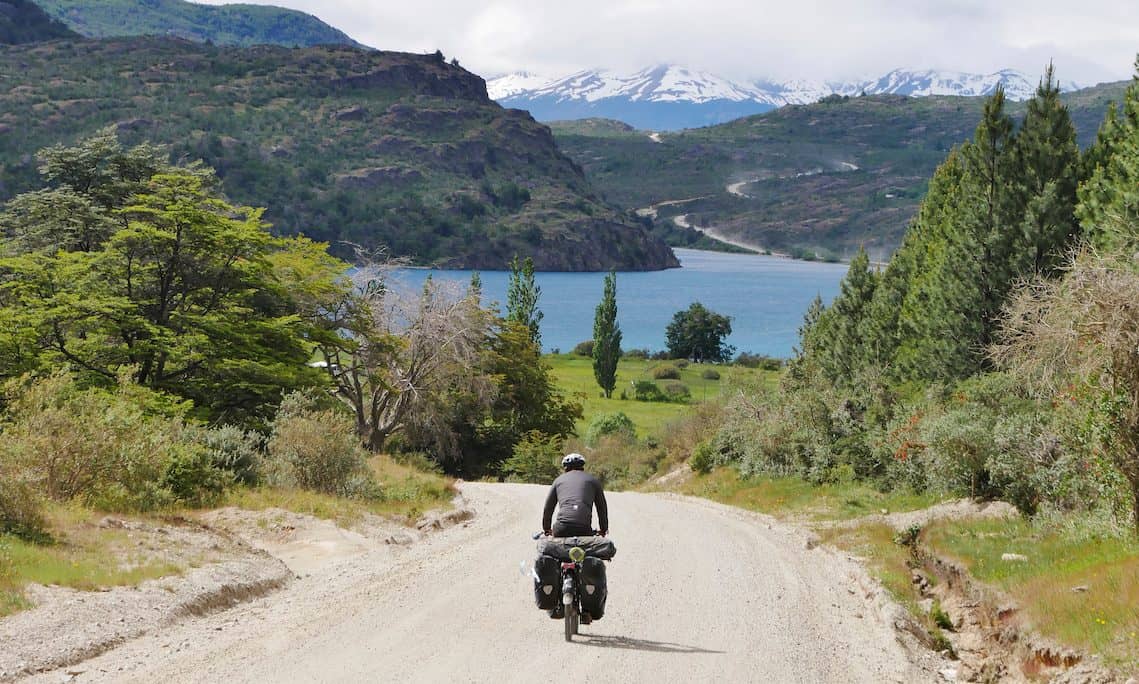
The next day we begin a route we saved specifically for this “return trip” along the Carretera Austral. Where we previously cycled along the northwest side along a lake, we now ride along the south side, heading east. This was strongly discouraged on the way out because the wind here ‘always’ blows hard from the west. So we were also told by the Englishmen we met yesterday who had not even been able to complete that ride along the south shore because of the headwind. As we cycle toward the turnoff, Paul starts to grumble a little: “I don’t believe that we’ll suddenly have a tailwind… I keep my spirits up: ‘You never know, the wind can come from a completely different direction along the lake. Or it could be something with the mountains…’ But eventually I also have to give in. By now we are cycling along the lake, in a north-east direction, and the wind is blowing full force in our faces. Paul is balking like hell. In the first village we do some shopping and treat ourselves from our last cash for coffee in a cozy little restaurant. We ask the bartender for an explanation of the wind. He confirms that it “generally” does indeed blow from the other direction, and briskly too. This wind from the east blows occasionally and is called the “viento leone,” the “lion wind. Totally can’t follow it, but it’s something about the mountains….
By now it’s also raining so we don’t have much appetite for it anymore. Yet it is not so bad once we get back on our bikes. The wind has subsided, the rain turns out to be drizzle. The scenery is beautiful, although you have to see through the gray. Paul has his gray glasses on and sees only rain and wind. So I am glad when we come across a bus stop/shelter large enough to pitch our tent in. Once washed, warmly dressed and out of the wind, Paul also takes off his gray goggles and provides a delicious meal after all. No matter how tough a cycling day is, no matter how much rain, wind, bad gravel. When afterwards you are washed, warm and dry in a sleeping bag in the tent it was all worth it…. at least, that’s how I feel.
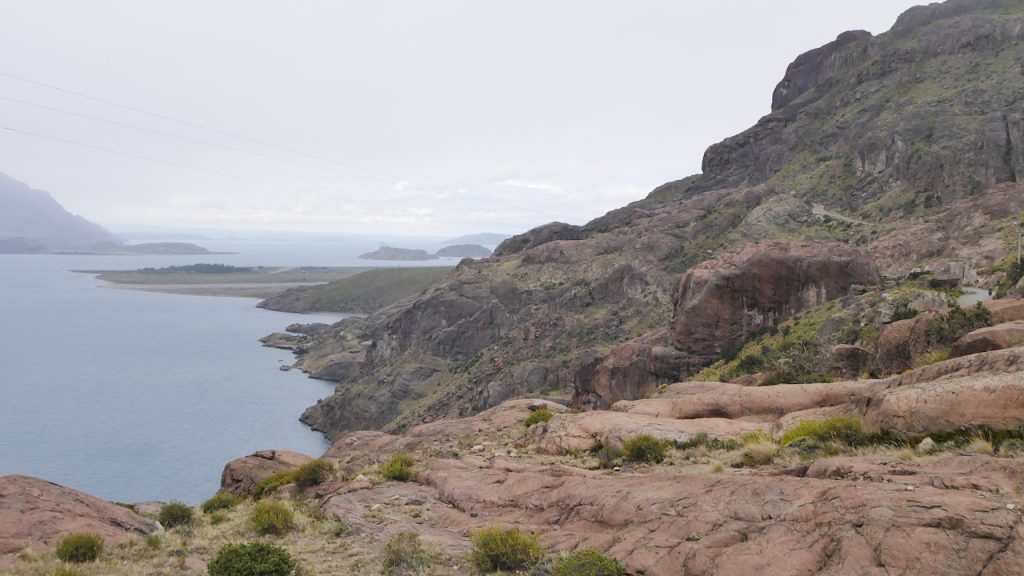
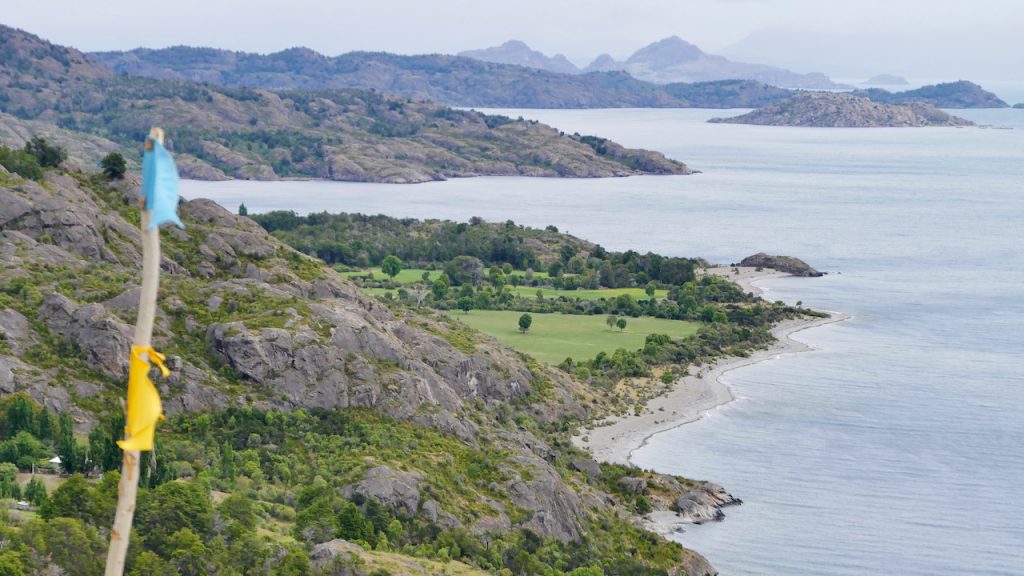
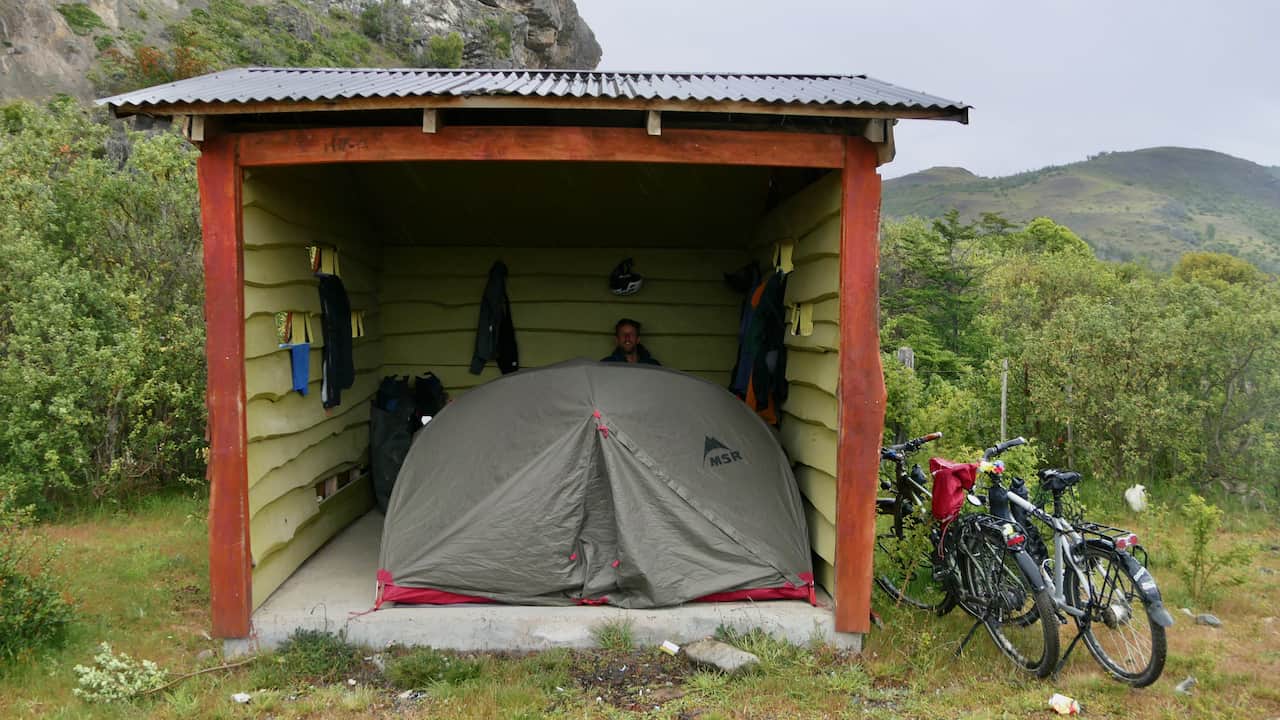
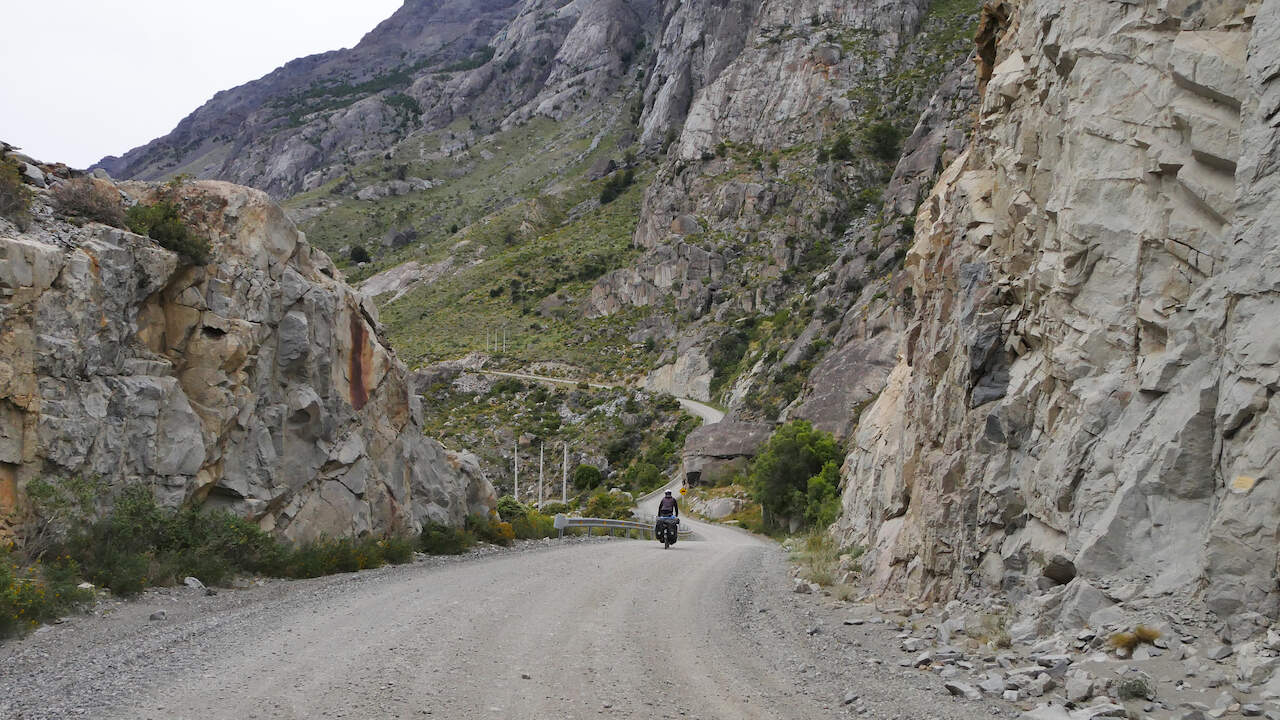
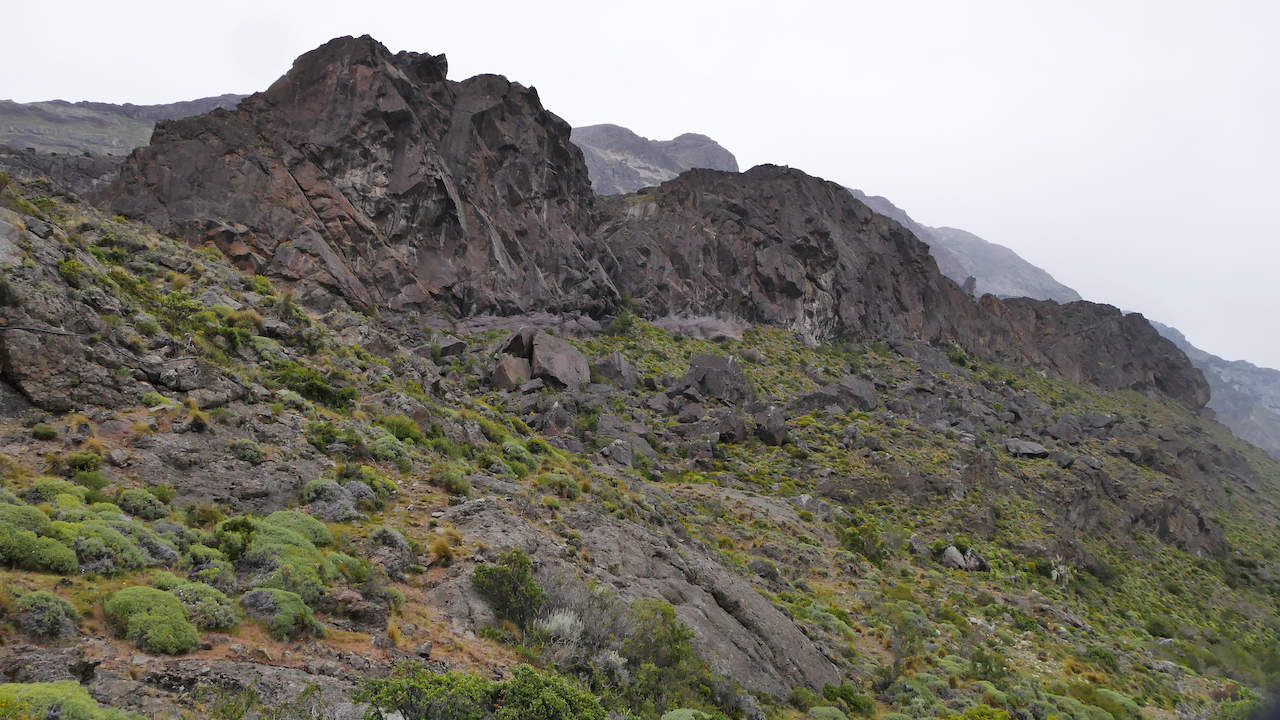
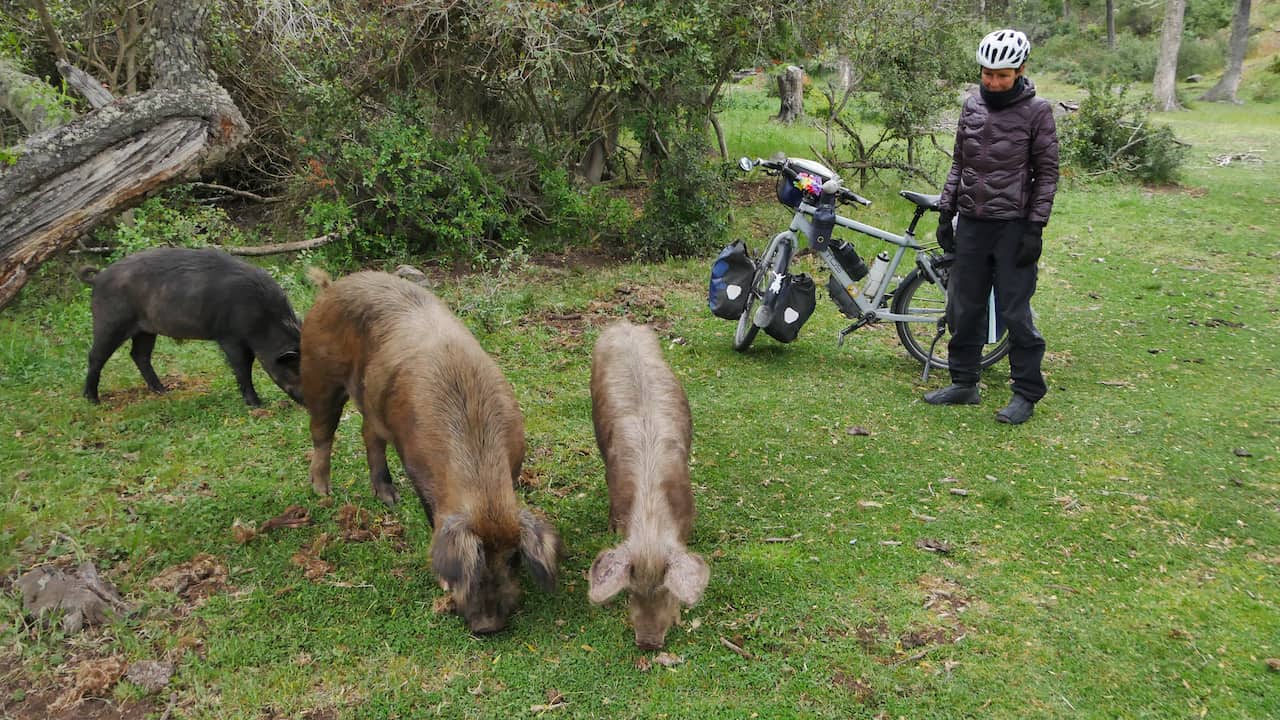
The next day all is not too bad! The wind has turned a little and it stays dry all day. Even Paul, who had just adjusted his expectations to ‘headwind + rain’, is gladly surprised. We enjoy the beautiful surroundings immensely. During lunch on a field behind the verge we meet two black pigs running loose. When Paul finally feeds the curious male some apple, two more pink ones come running out of the bushes. These are a lot bolder than the others. During this trip we have barely seen any pigs. No idea to whom these four belong; there is no house in the vicinity.
At the end of the second day, a fierce pain comes on in my right knee (the relatively good one). Fortunately, the peak of the pain coincides with finding a camping spot. I don’t have to pedal half a kilometer more I feel. During the night the pain subsides somewhat but there can be no cycling the next day. In the morning Paul hoists our bikes from the riverbank back onto the road. By good luck I stick my thumb up to the first approaching car, there are not that many cars passing by here. He stops and has no problem giving us a ride to Chile Chico. At breakneck speed (he has been driving this road six days a week for years) he swings down the rocky path toward the town. We are happy when we and our bikes arrive unscathed in Chile Chico after 50km. There we buy a ticket for the ferry to Puerto Ibañez for two days later. A little rest for my knee is now a must.
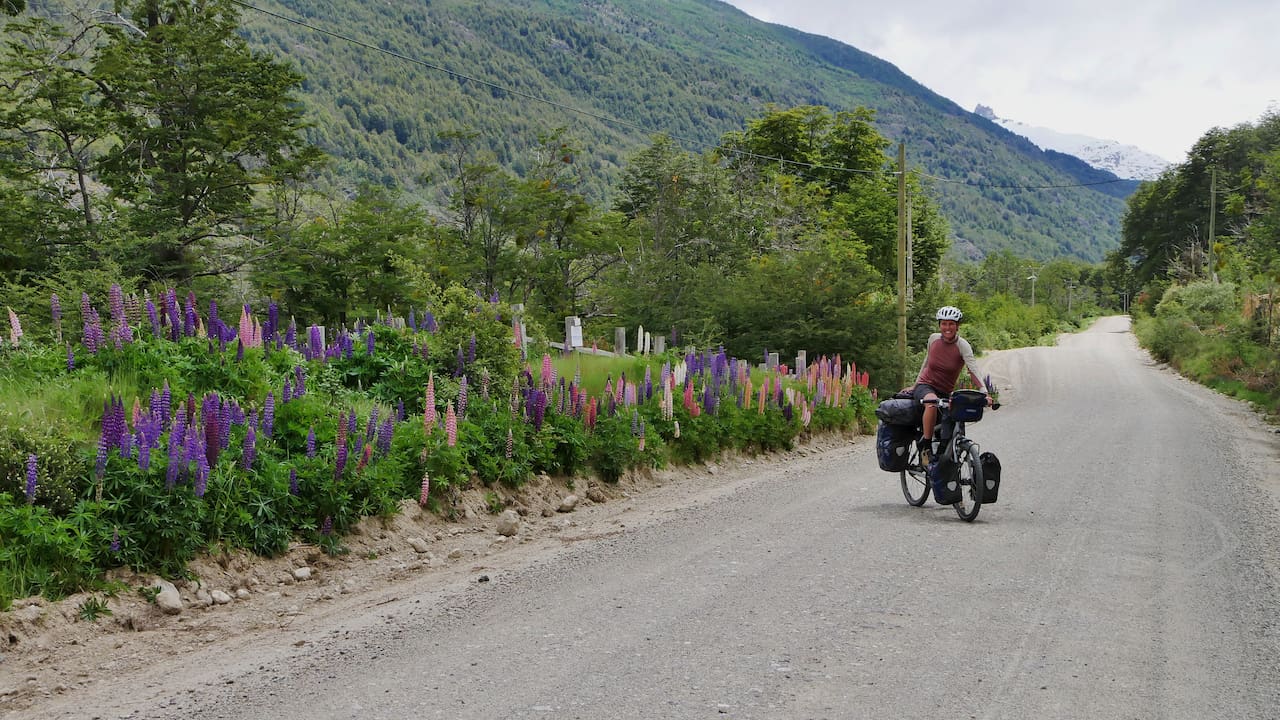

We will take that rest in Coyhaique. The town where we entered Chile 1.5 months ago and where we began our yet on the Carretera Austral. In the house of our WarmShowers hosts from then, we may now stay quietly while they are on summer vacation (during Christmas and New Year). We will certainly enjoy that for a while. An extra bonus, the cyclocross world cup races are being held these weeks. Quite nice sometimes, these digital possibilities of the 21st century 😉.
For now, I wish you, dear reader, a beautiful, adventurous (if desired), healthy, hopeful and loving 2024!
Hera
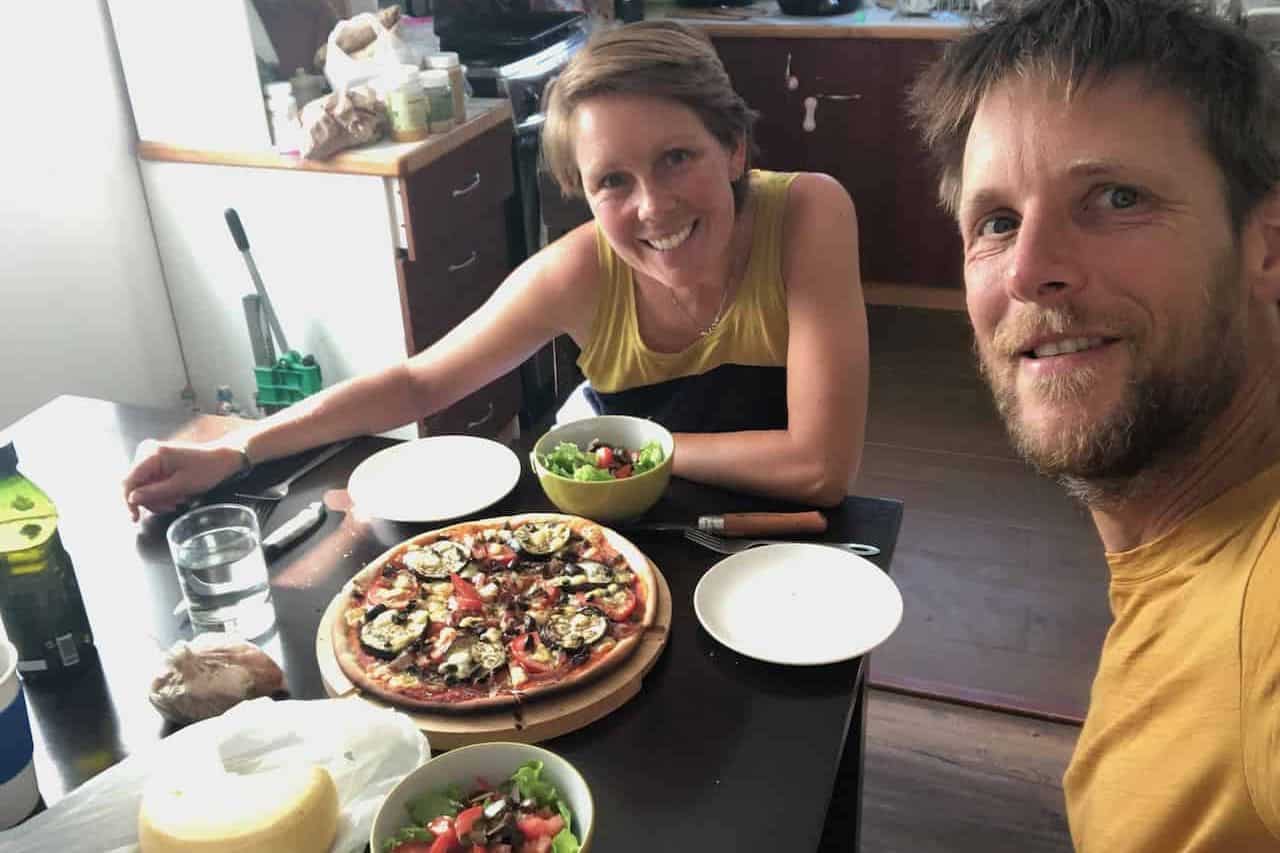
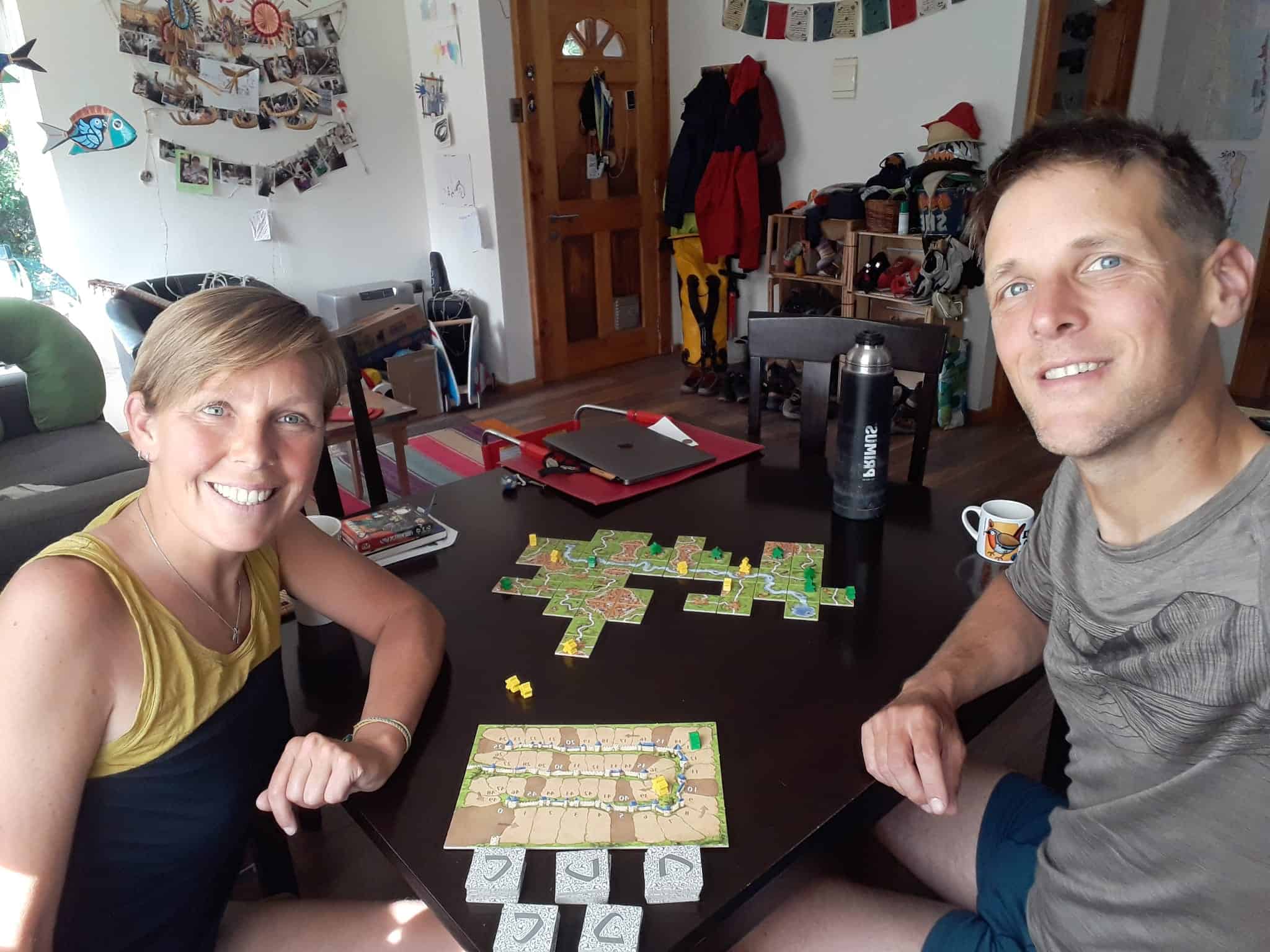

A lovely blog Hera. Some of those photos reminded me of when we were camping in the gers in Kyrgistan.
Happy new year to you and Paul and I hope your knee is better now.
Geoff
I read it all in one breath.AMAZING.
I did the same route/experience in 2006 but by foot or hitchhiking!
Best time i had in my life.
I wish you happy and safe 2024!
Feliz año nuevo!
A LATE Happy New Year to you! Life in Alaska has been too busy to break to read my favorite treat… a new Blog from you and your AWESOME adventures. It’s been 8 years of following your travels around the globe – since a casual meeting in a day room in Coldfoot Alaska on the Dalton Highway. I liked that you mentioned the highway in this blog. You were tent camping outside the old pipeline housing buildings and us in one of the strange hotel rooms inside. You were pedaling north to Prudhoe Bay and us driving back south after our wading in the waters of the Arctic Ocean, that was August 2016. Your drive to complete a days peddle through pain, weather and horrific road/trail beds is so inspiring. The comments of dialogue you run through your brain to complete the task at hand is something we could all use!
I pray 2024 will find you peddling more on a healed knee and with Paul joining you in all the fabulous photography of your shared journeys!
BTW – I’m really enjoying the simple way to enlarge the photos – SWEET!